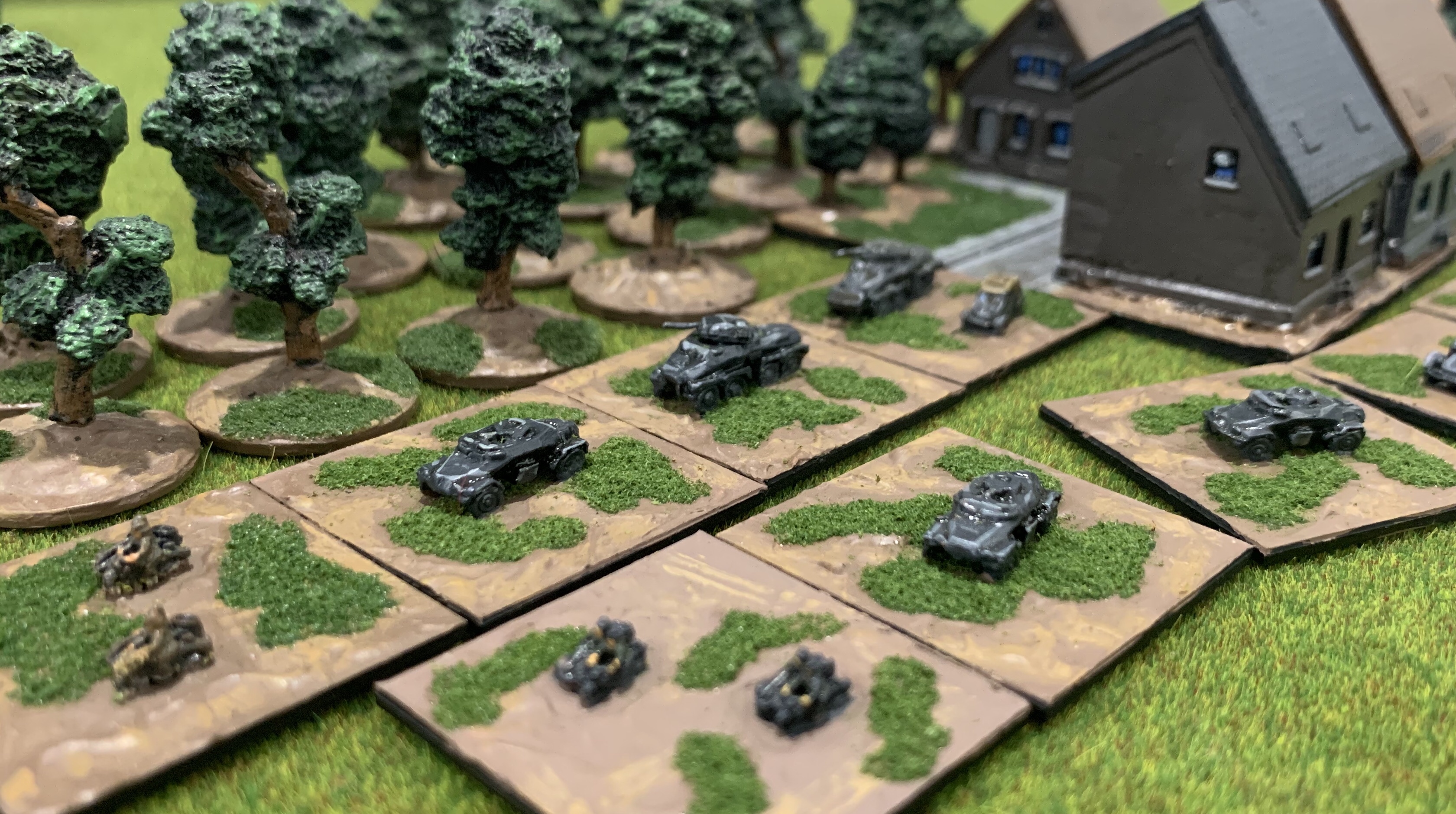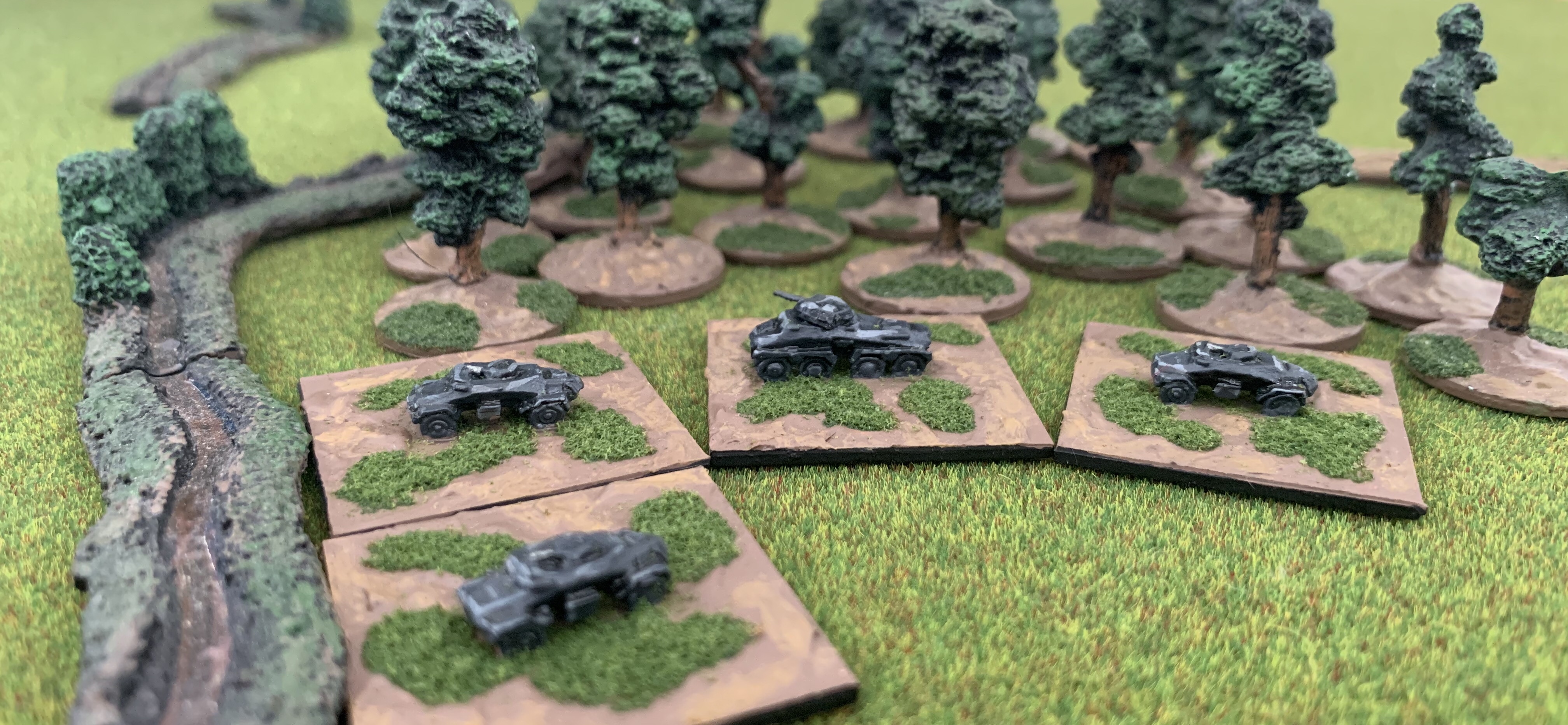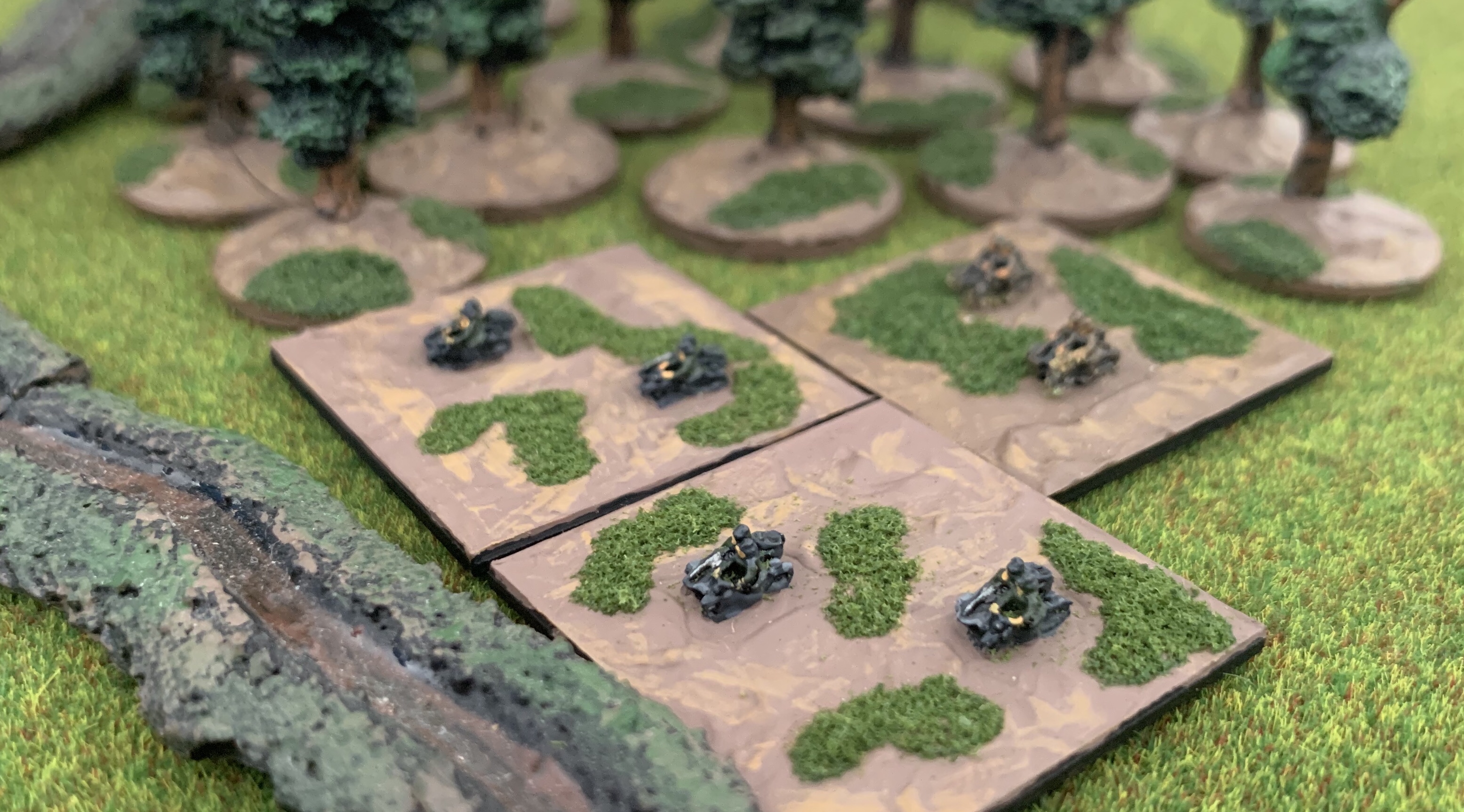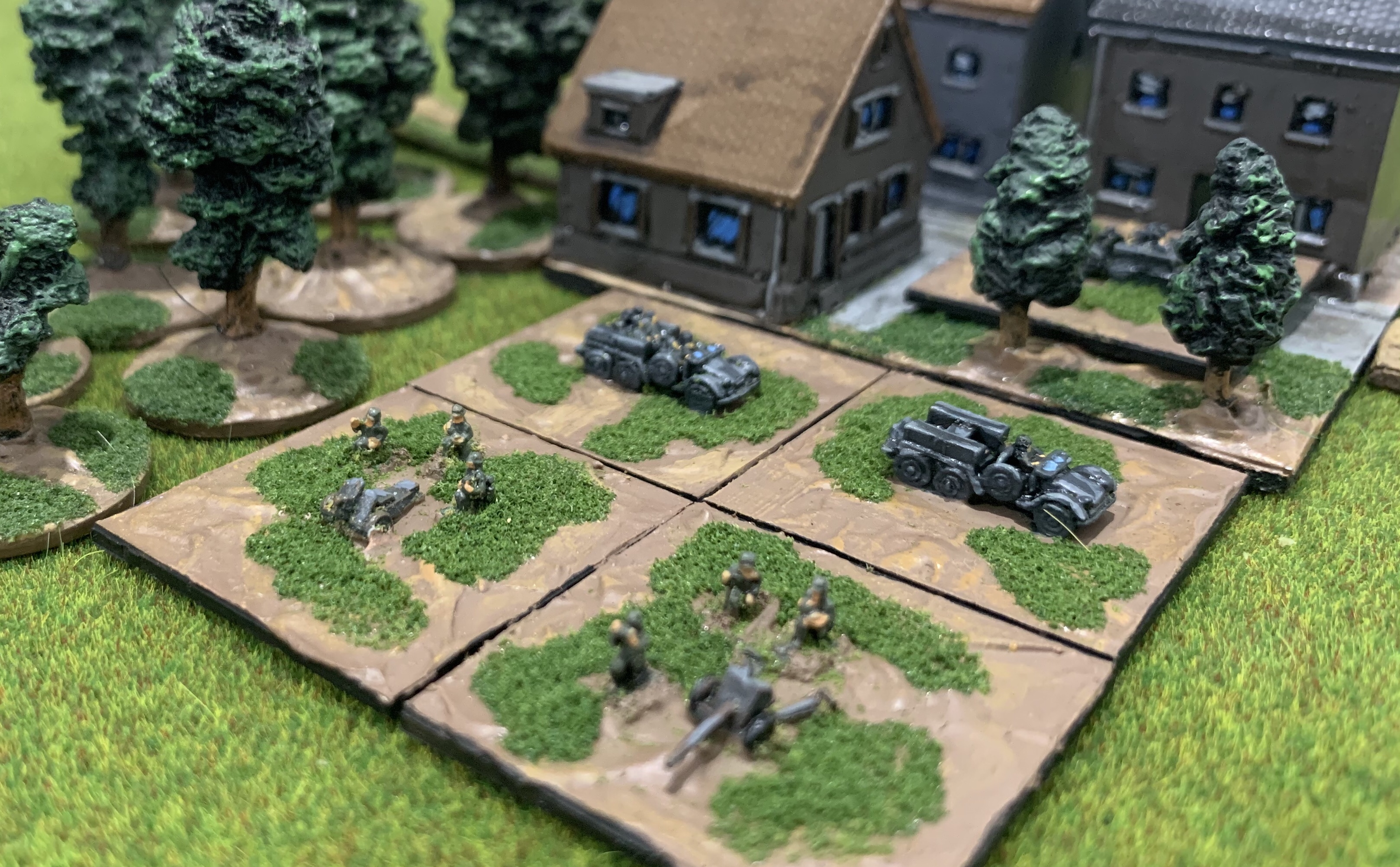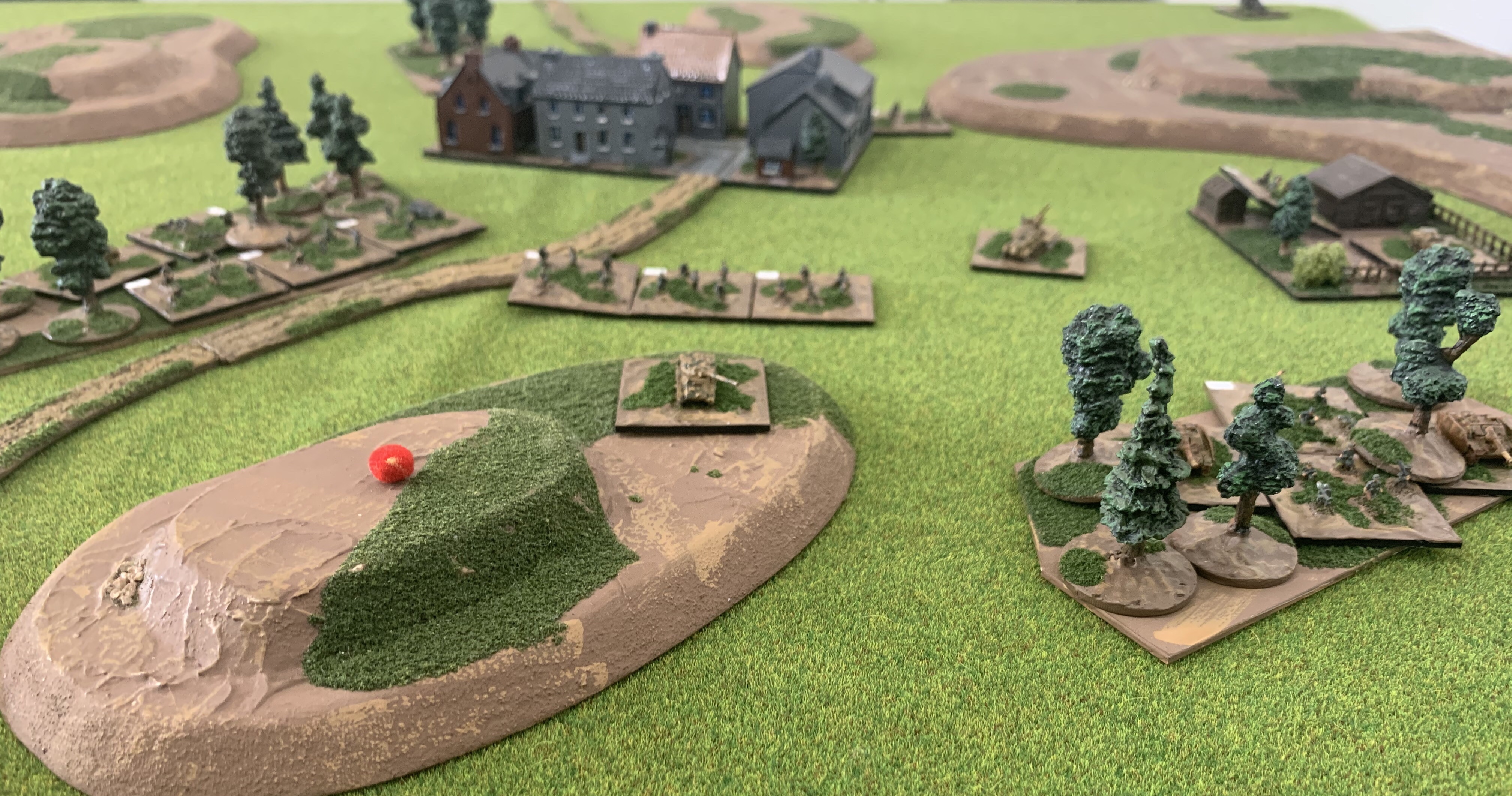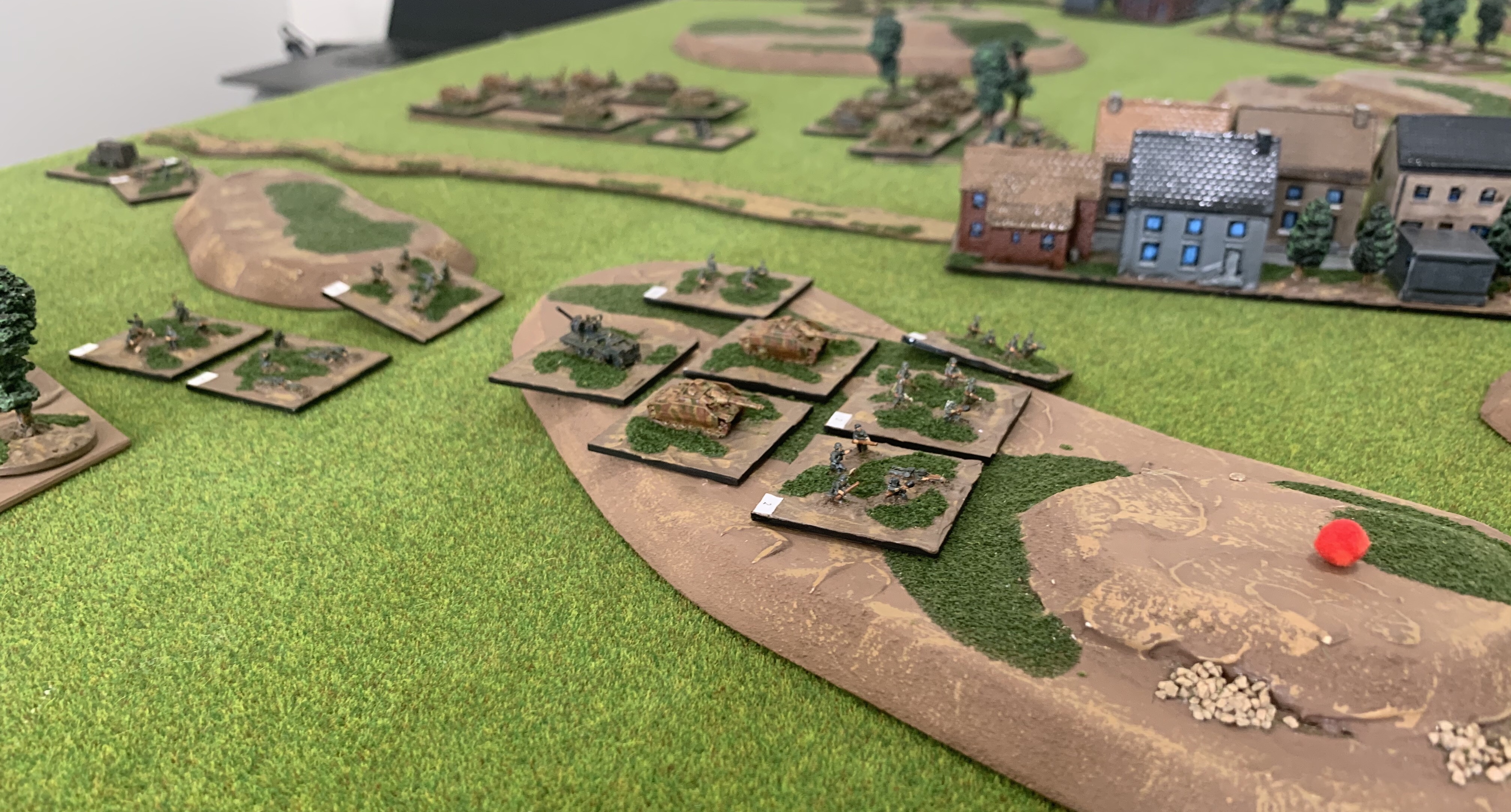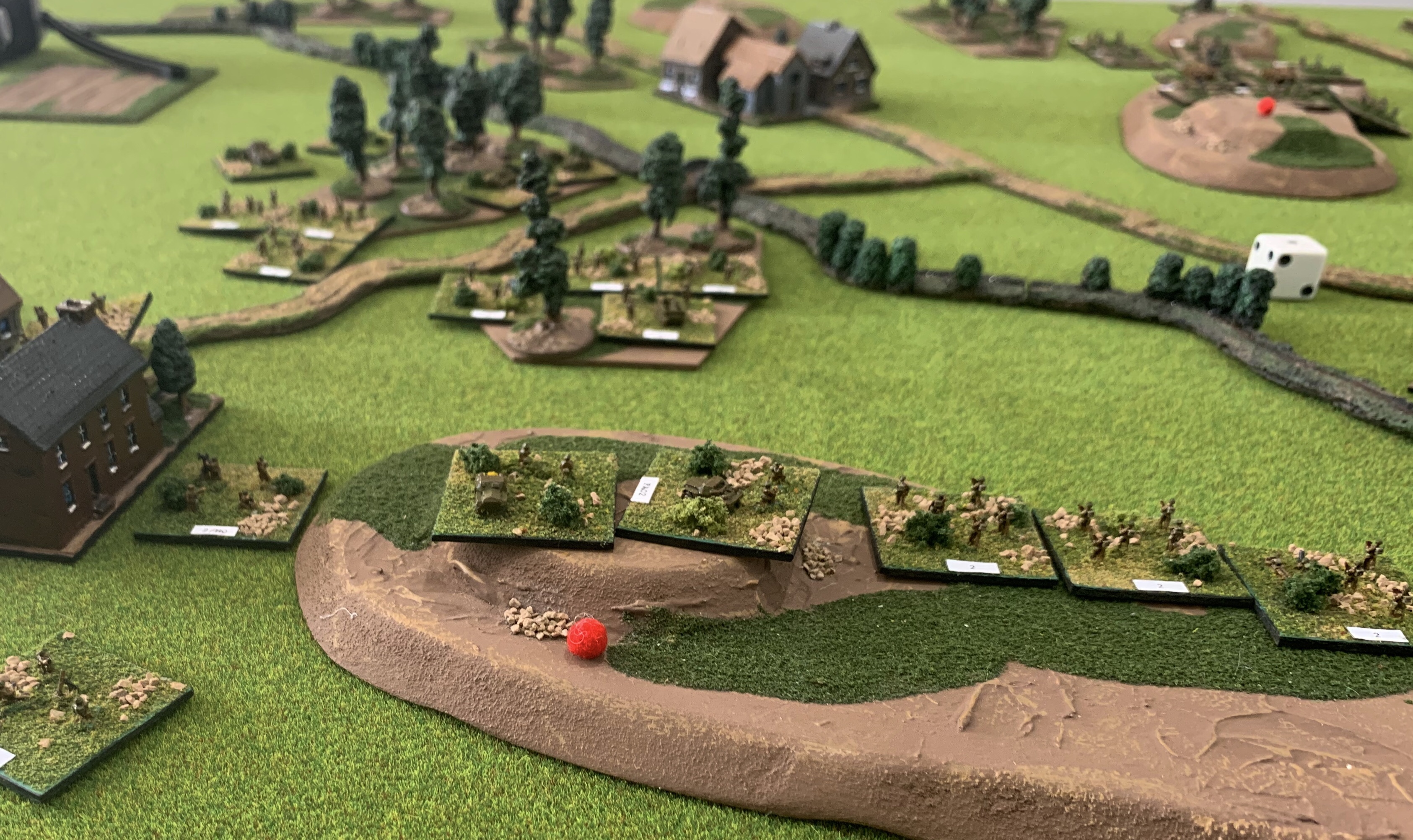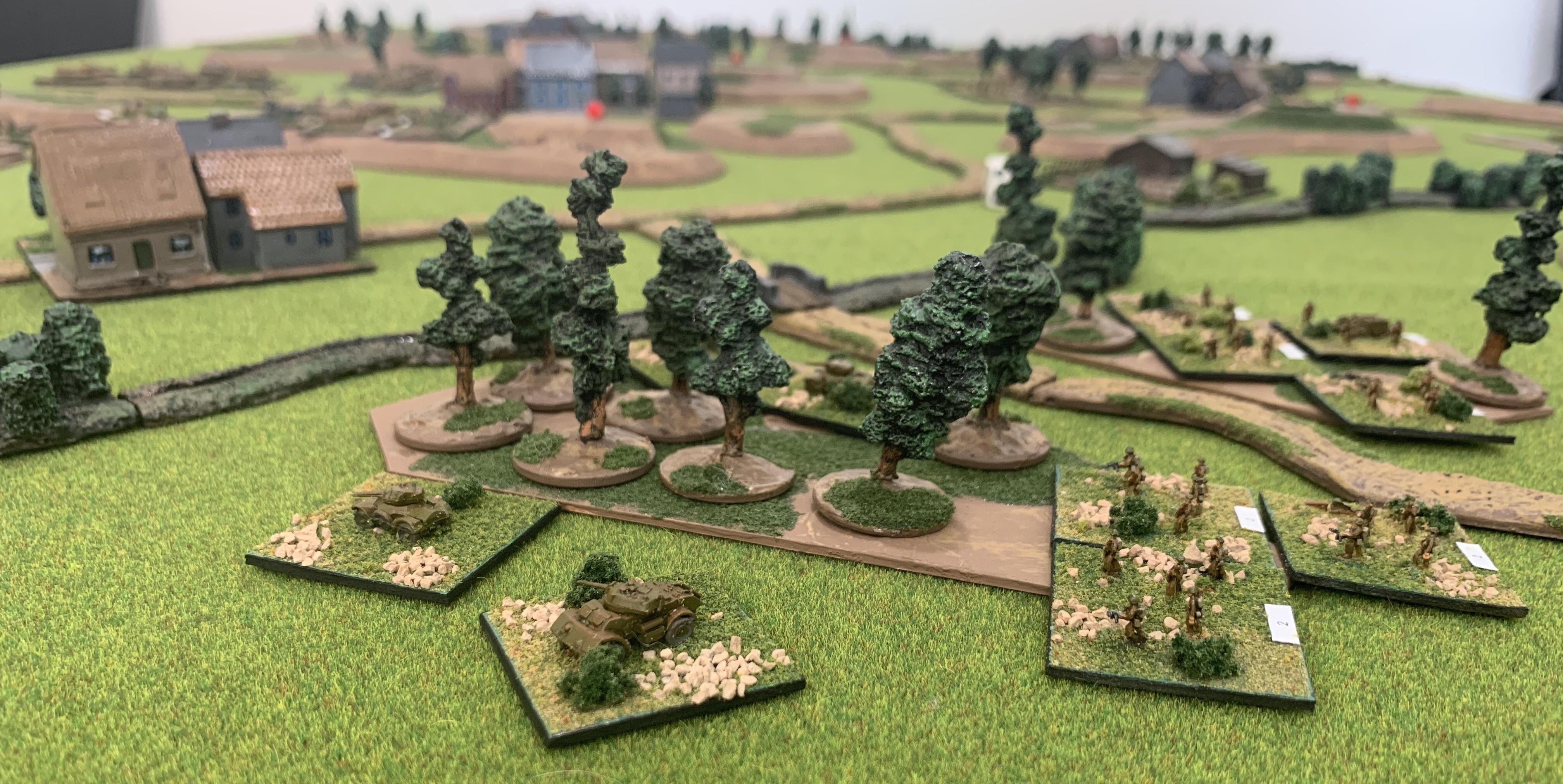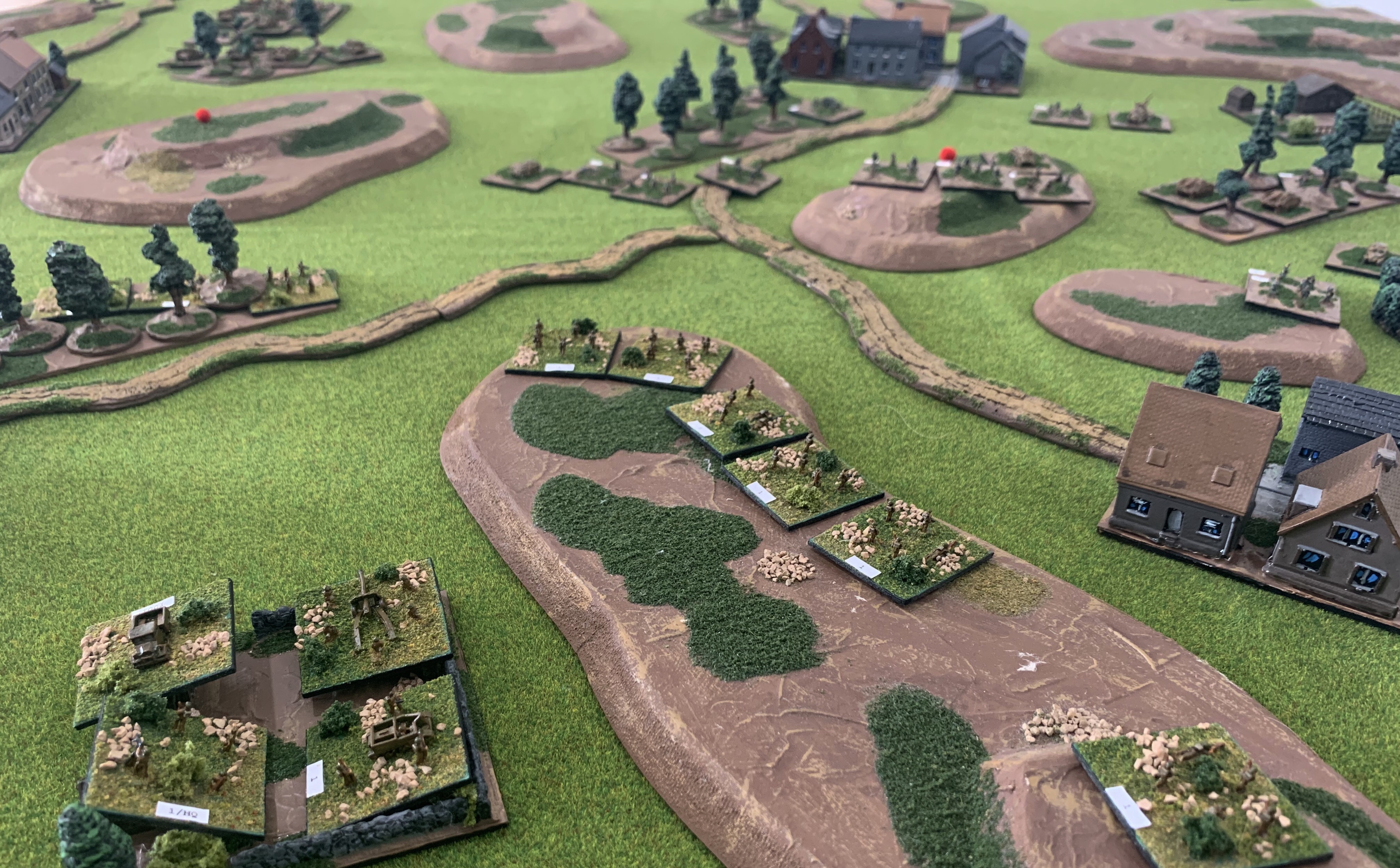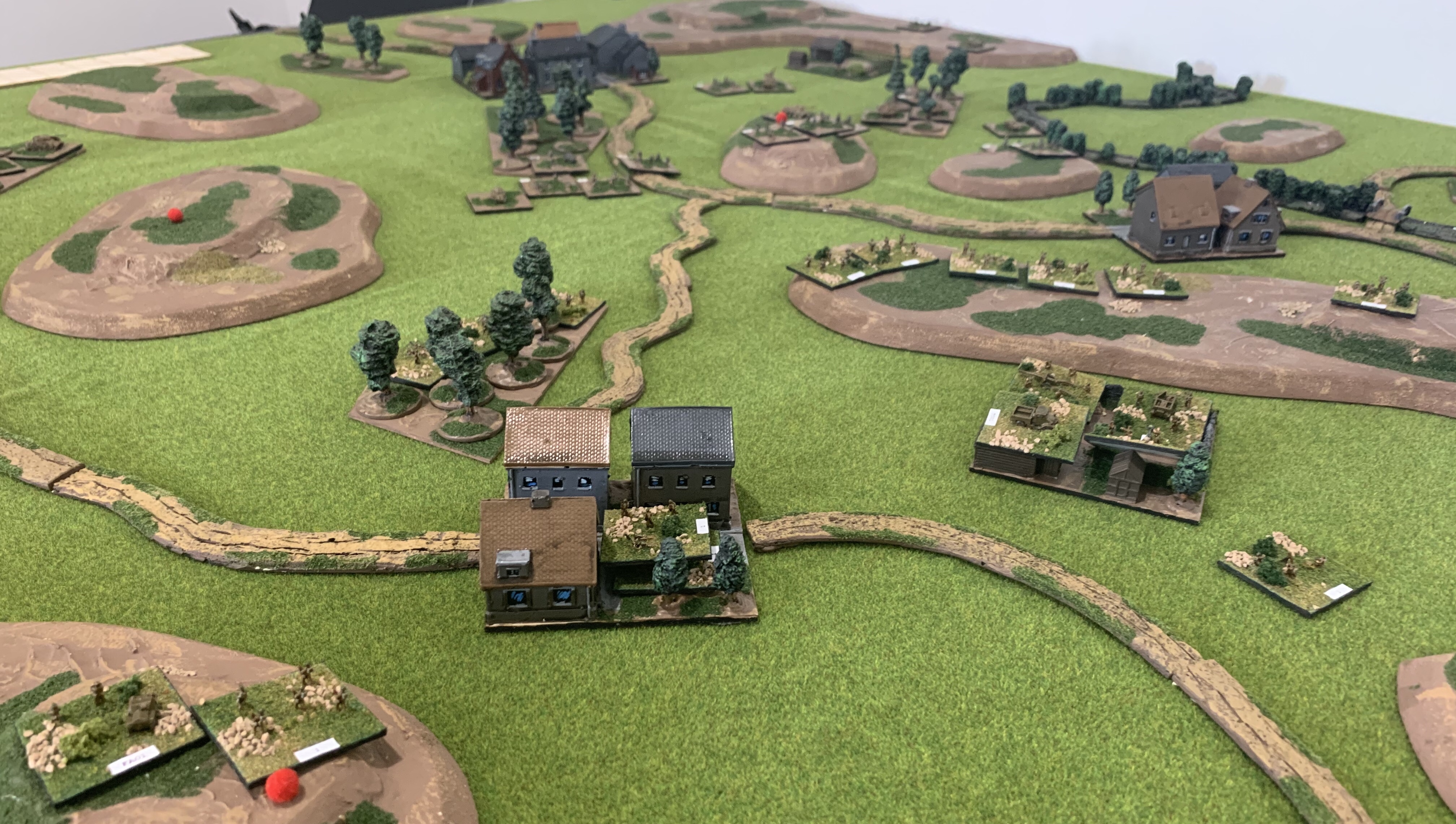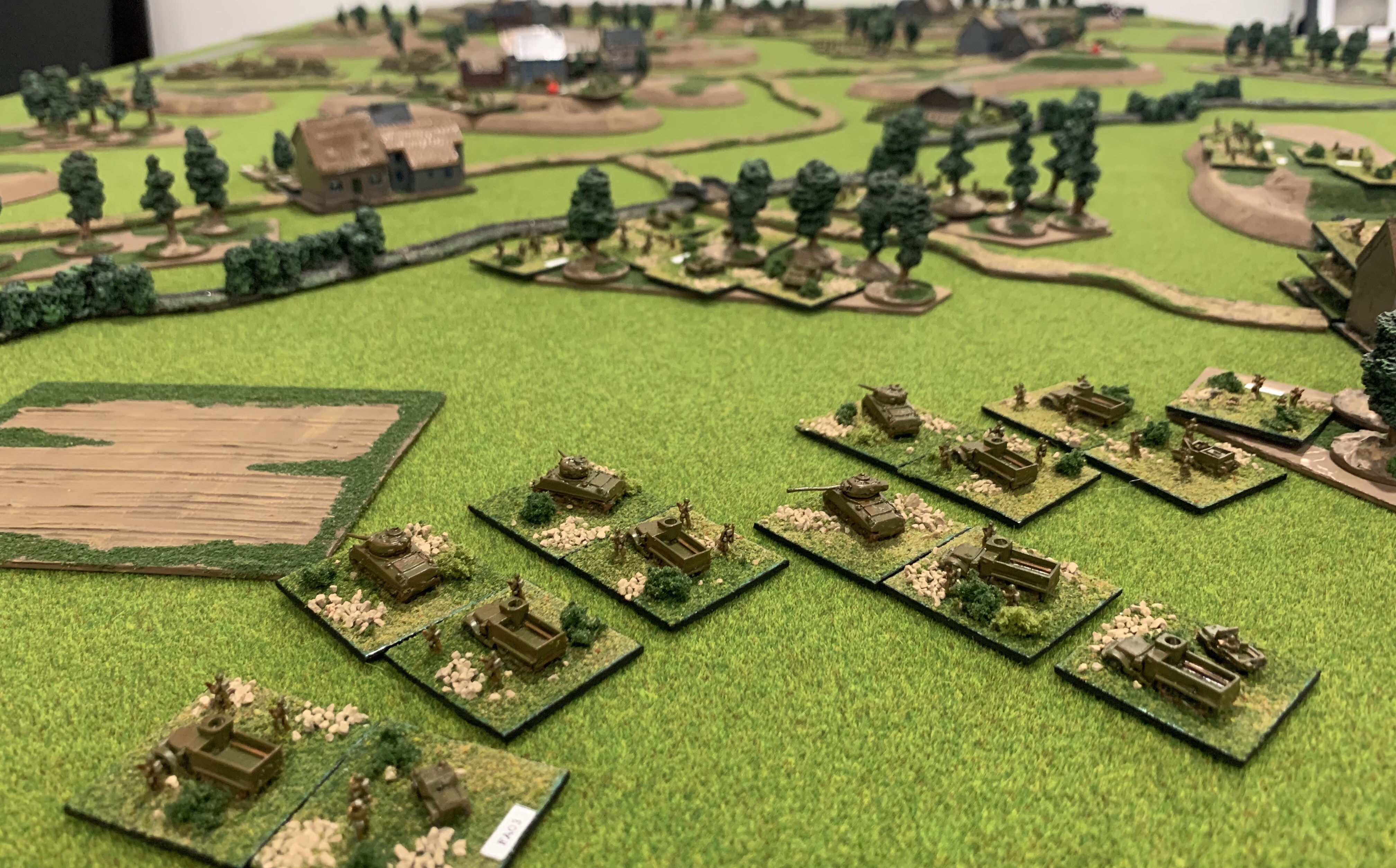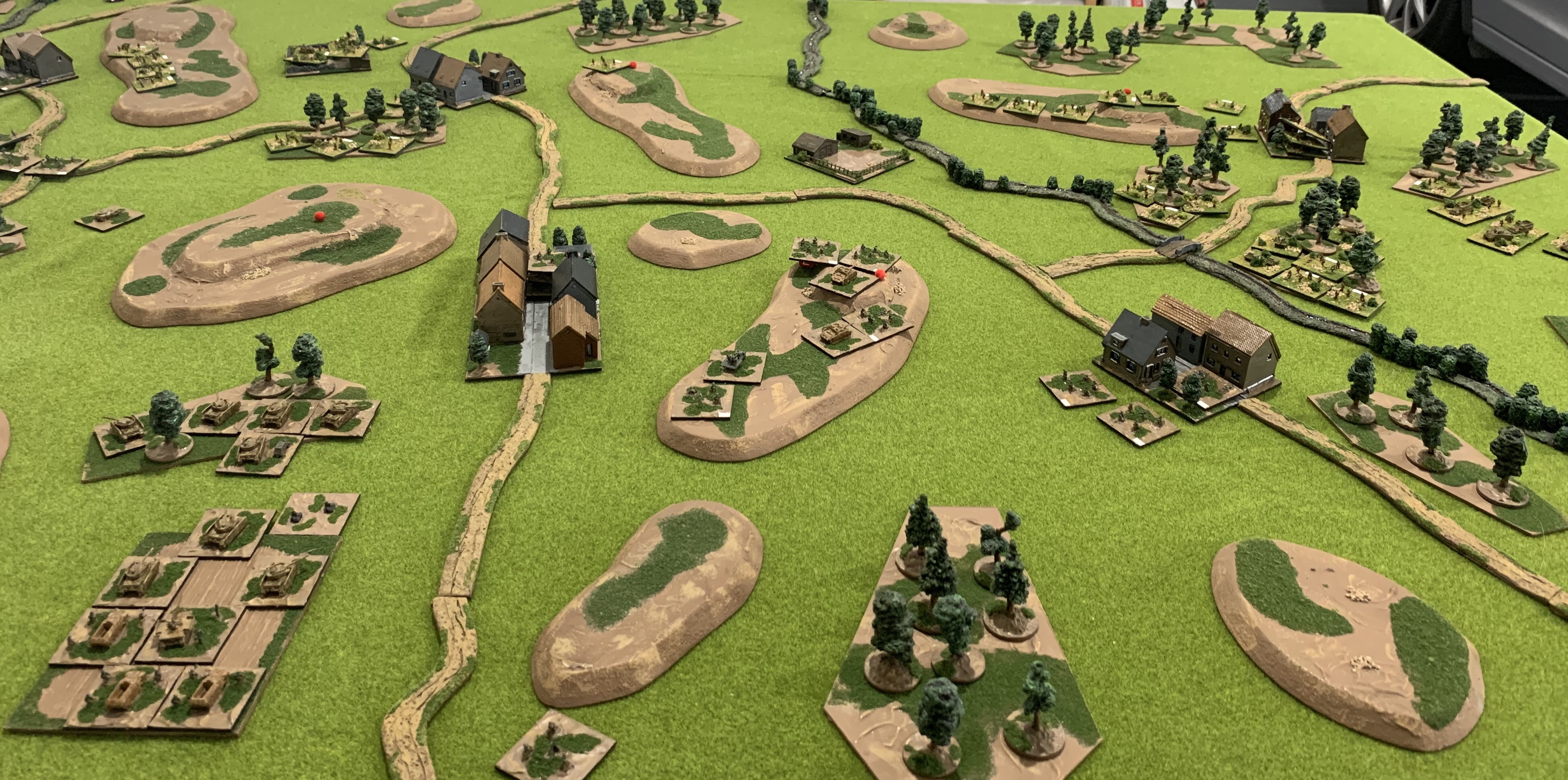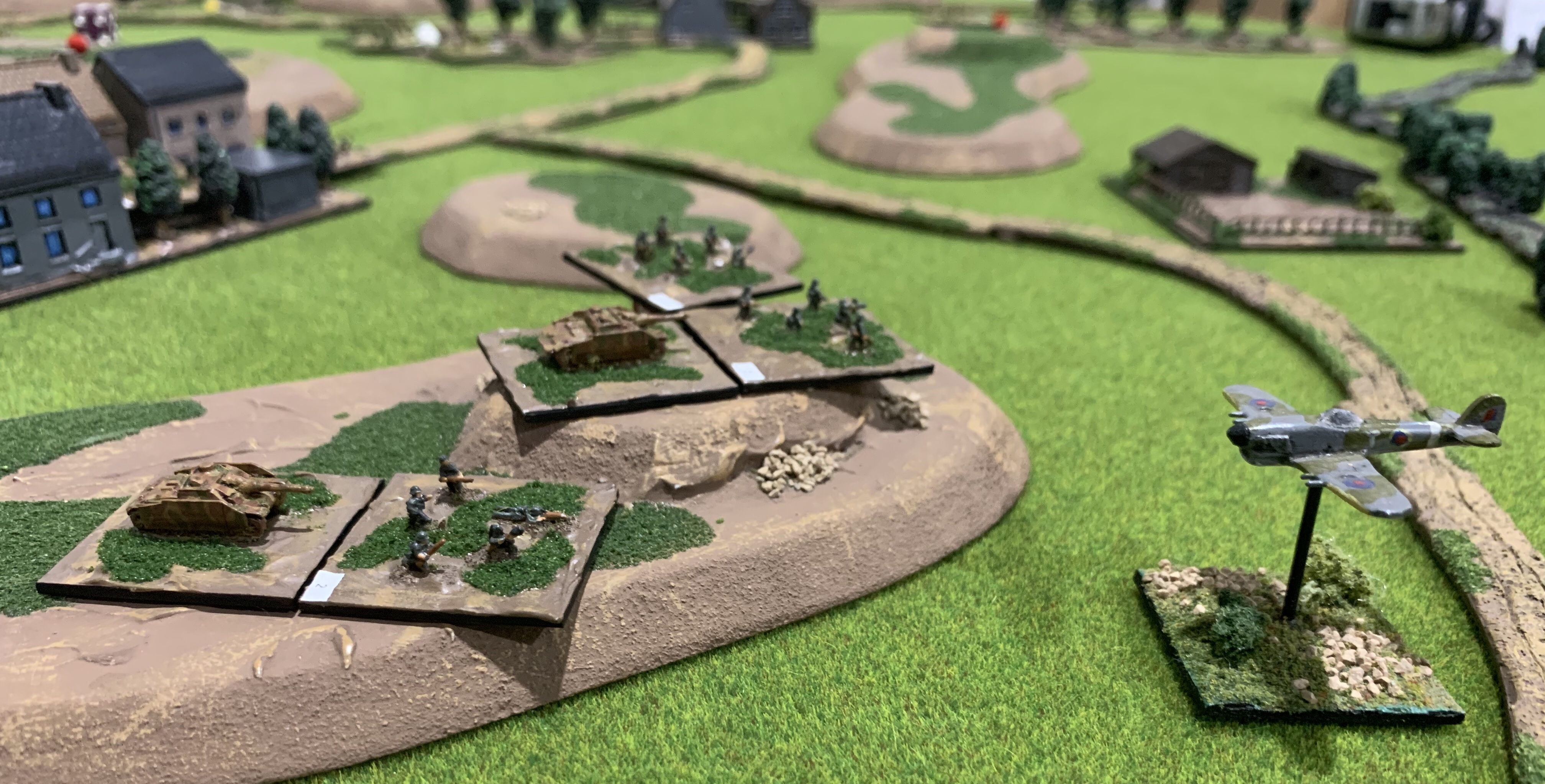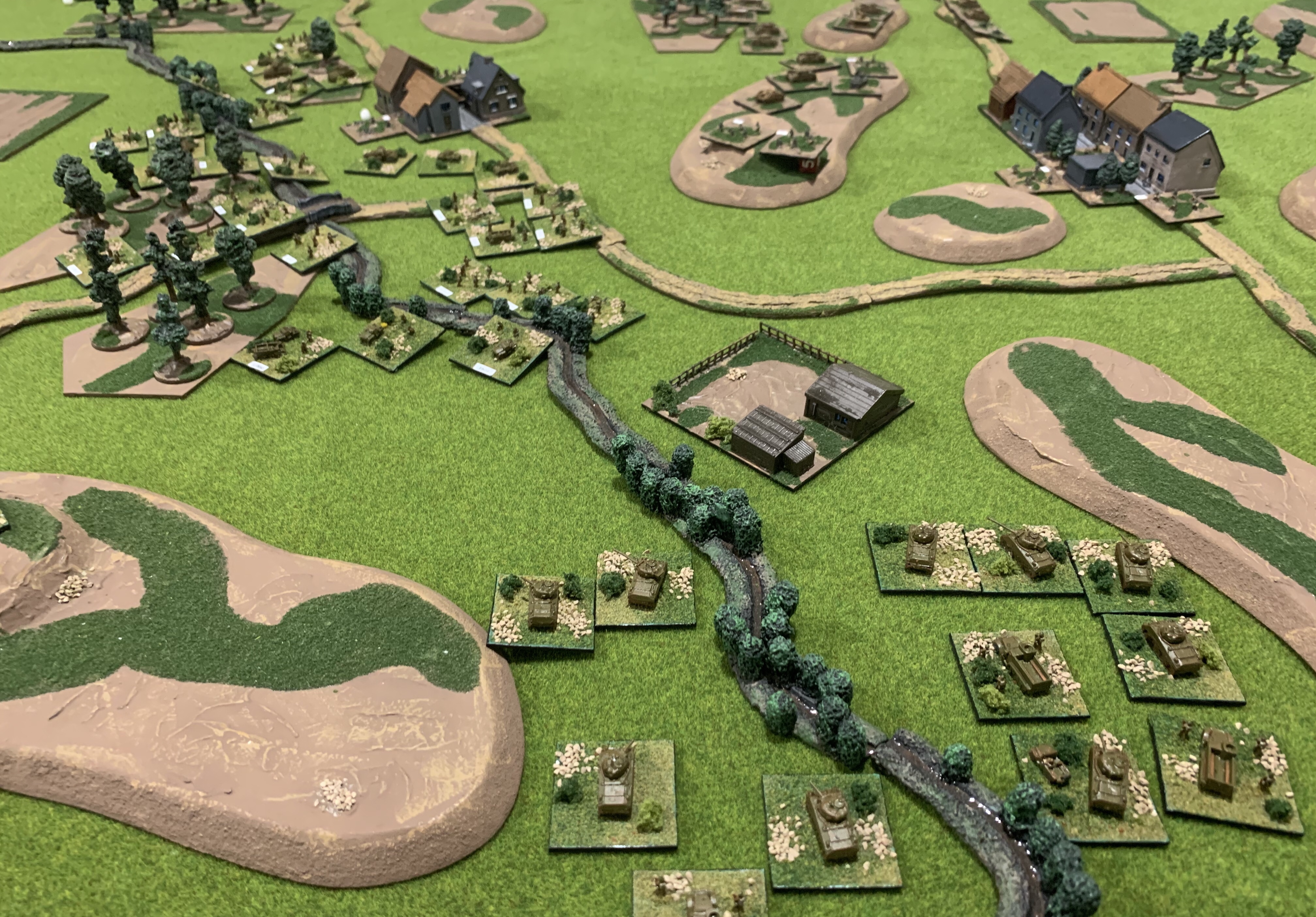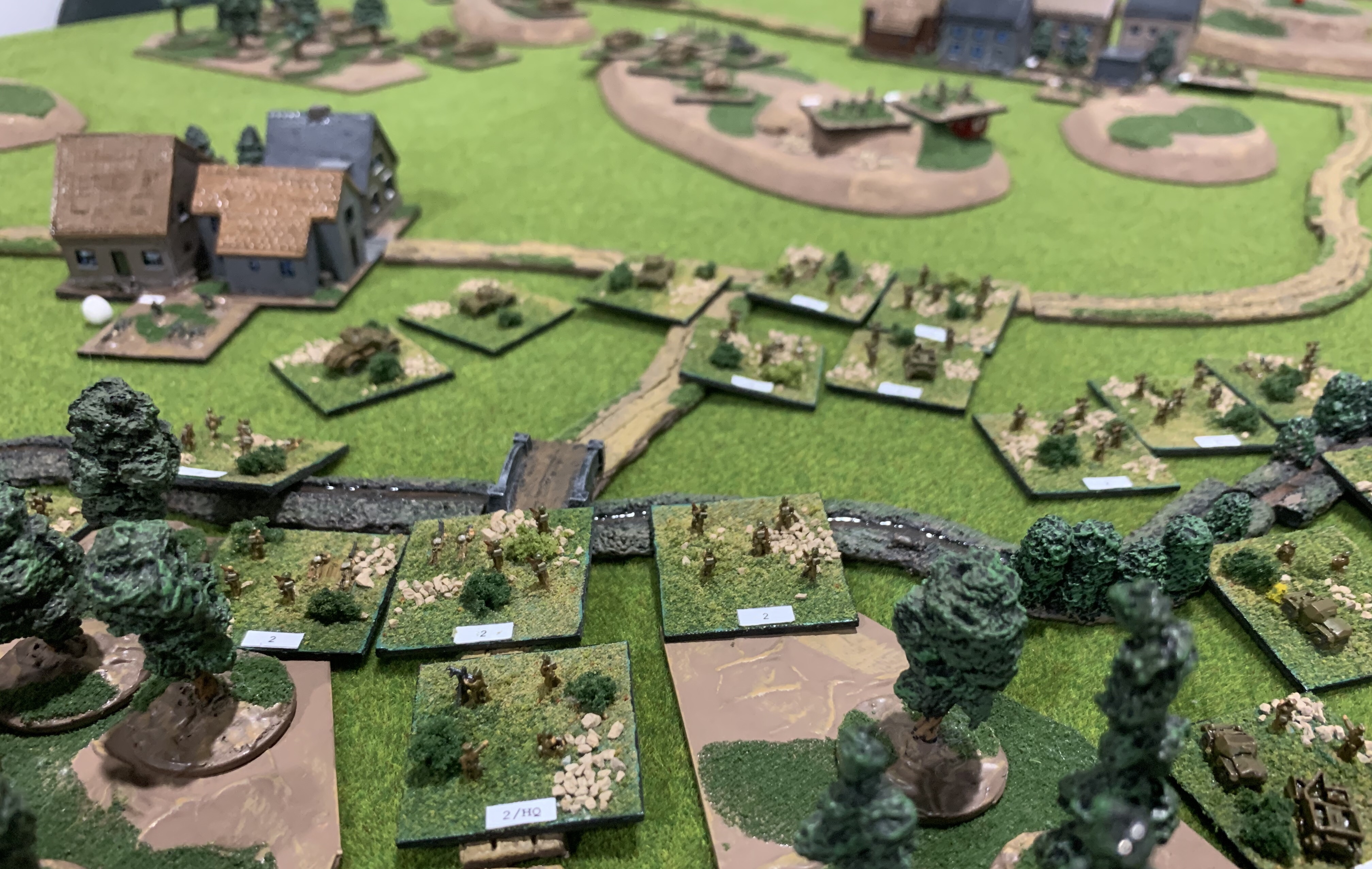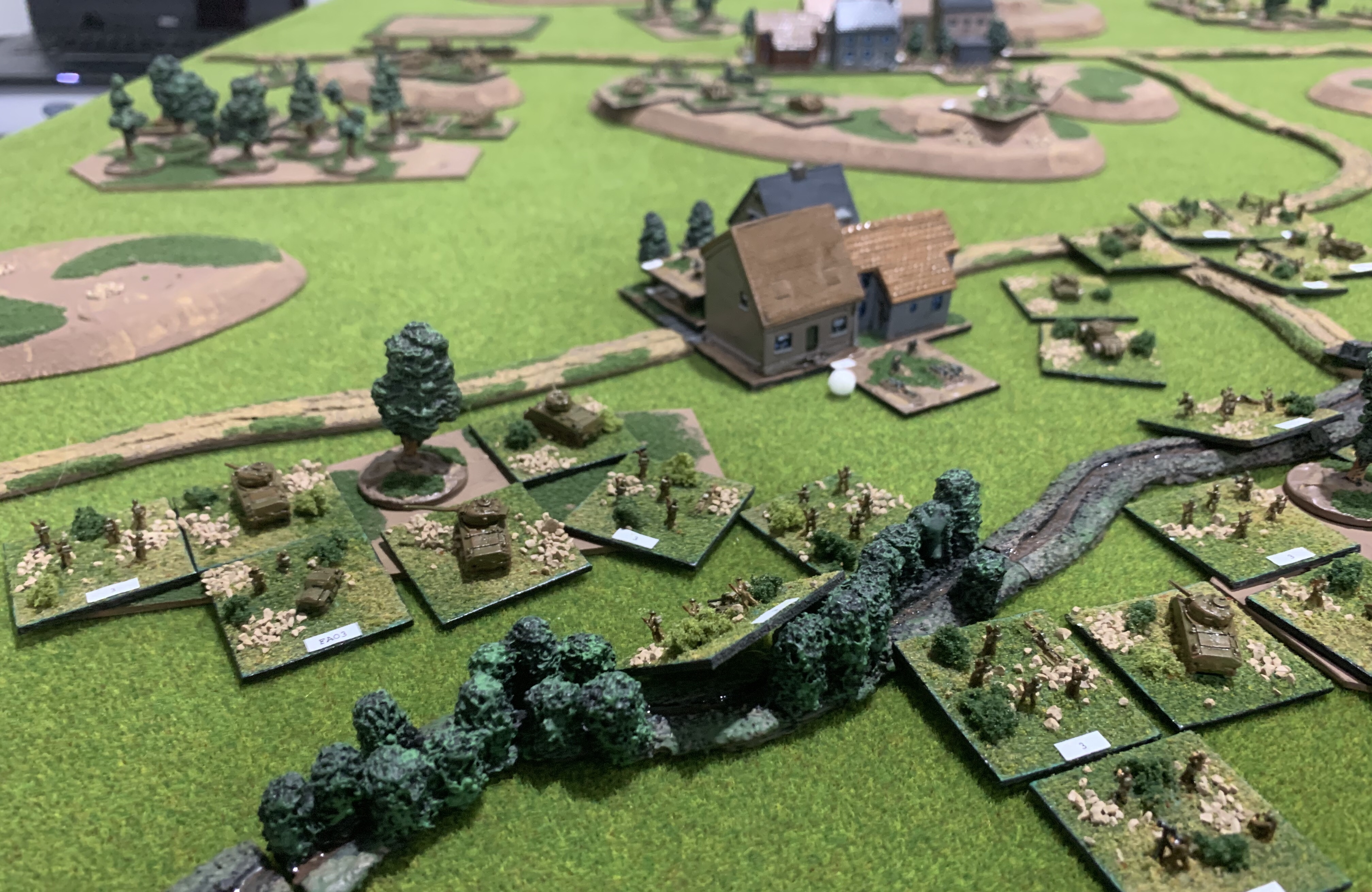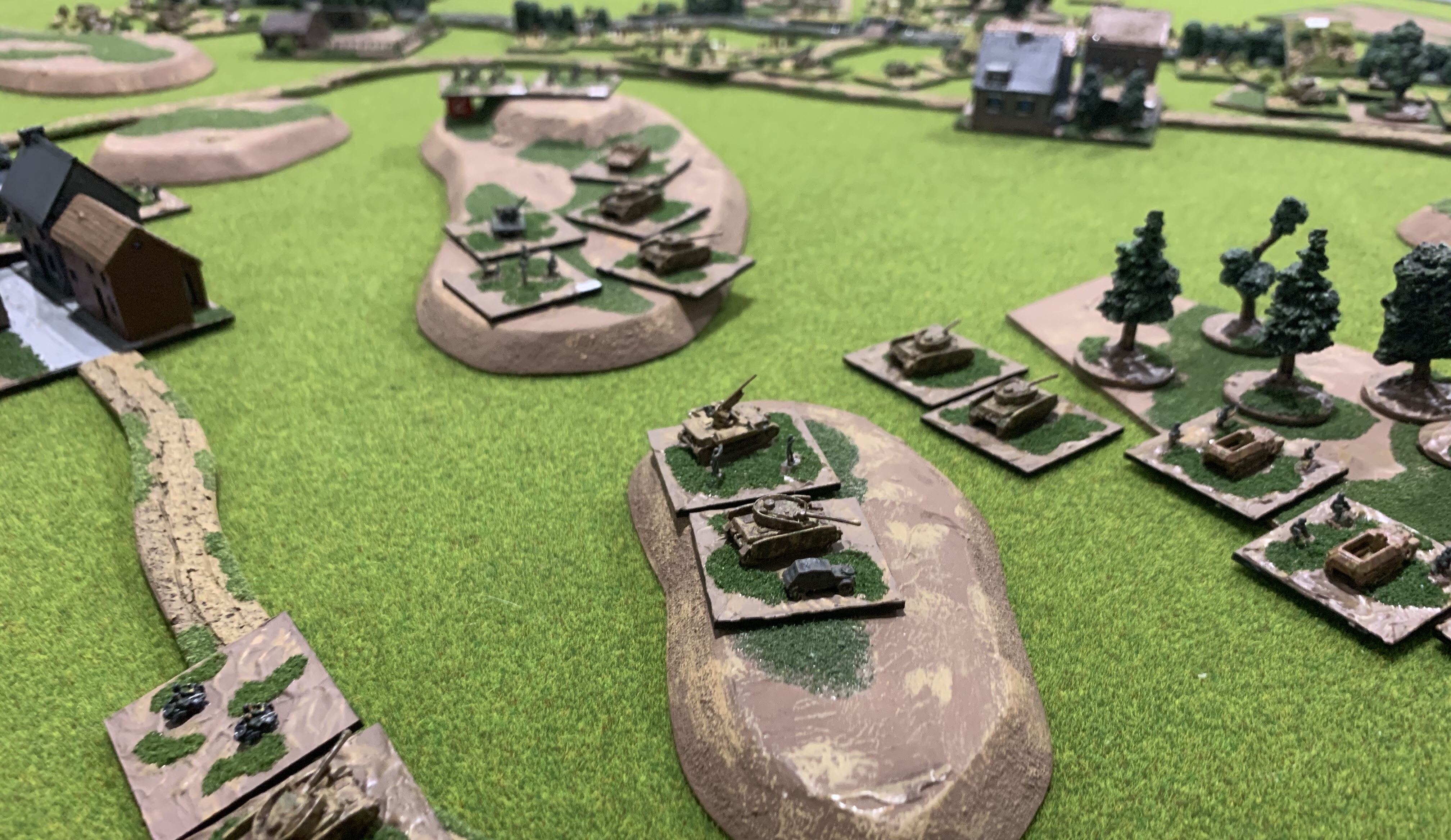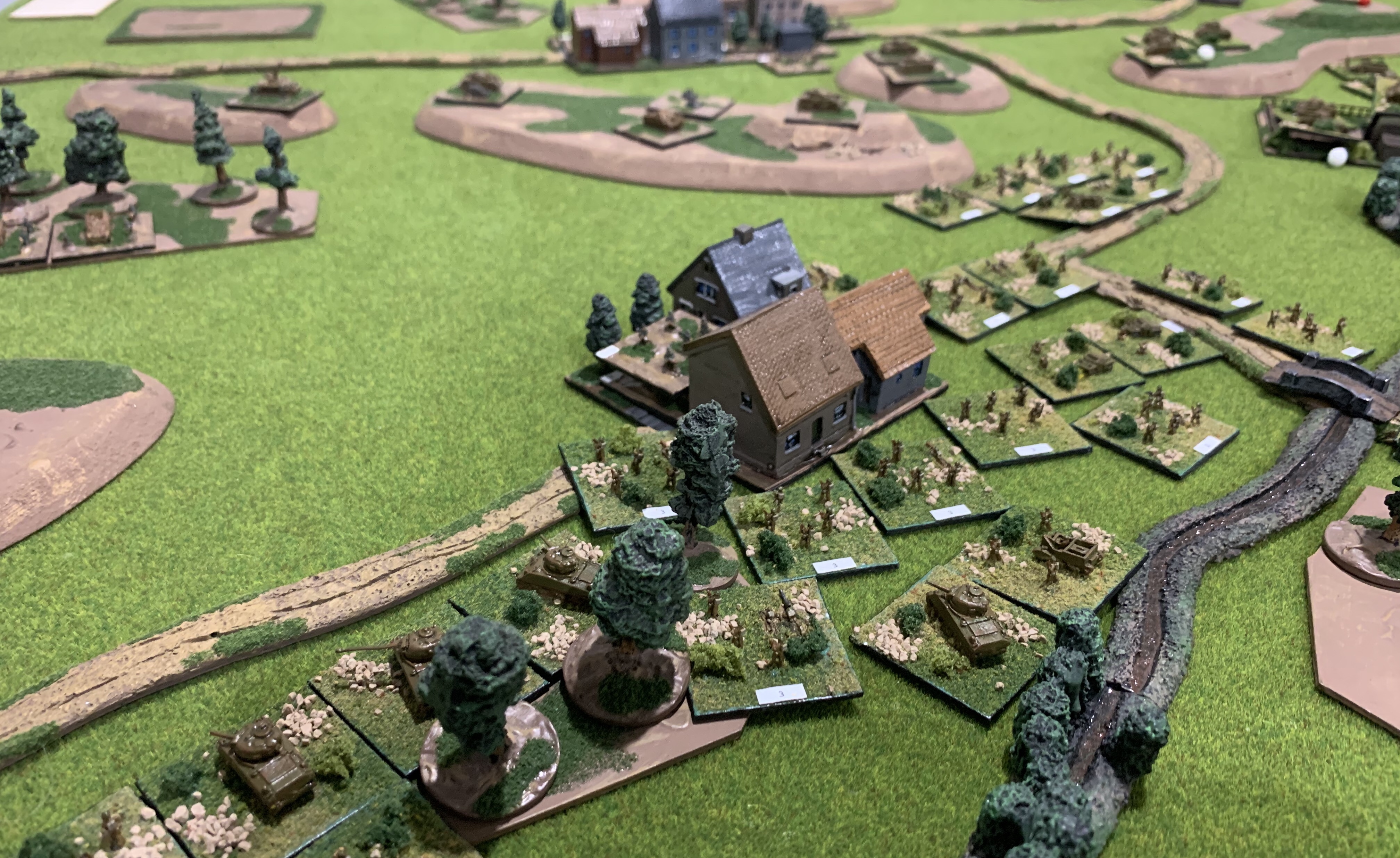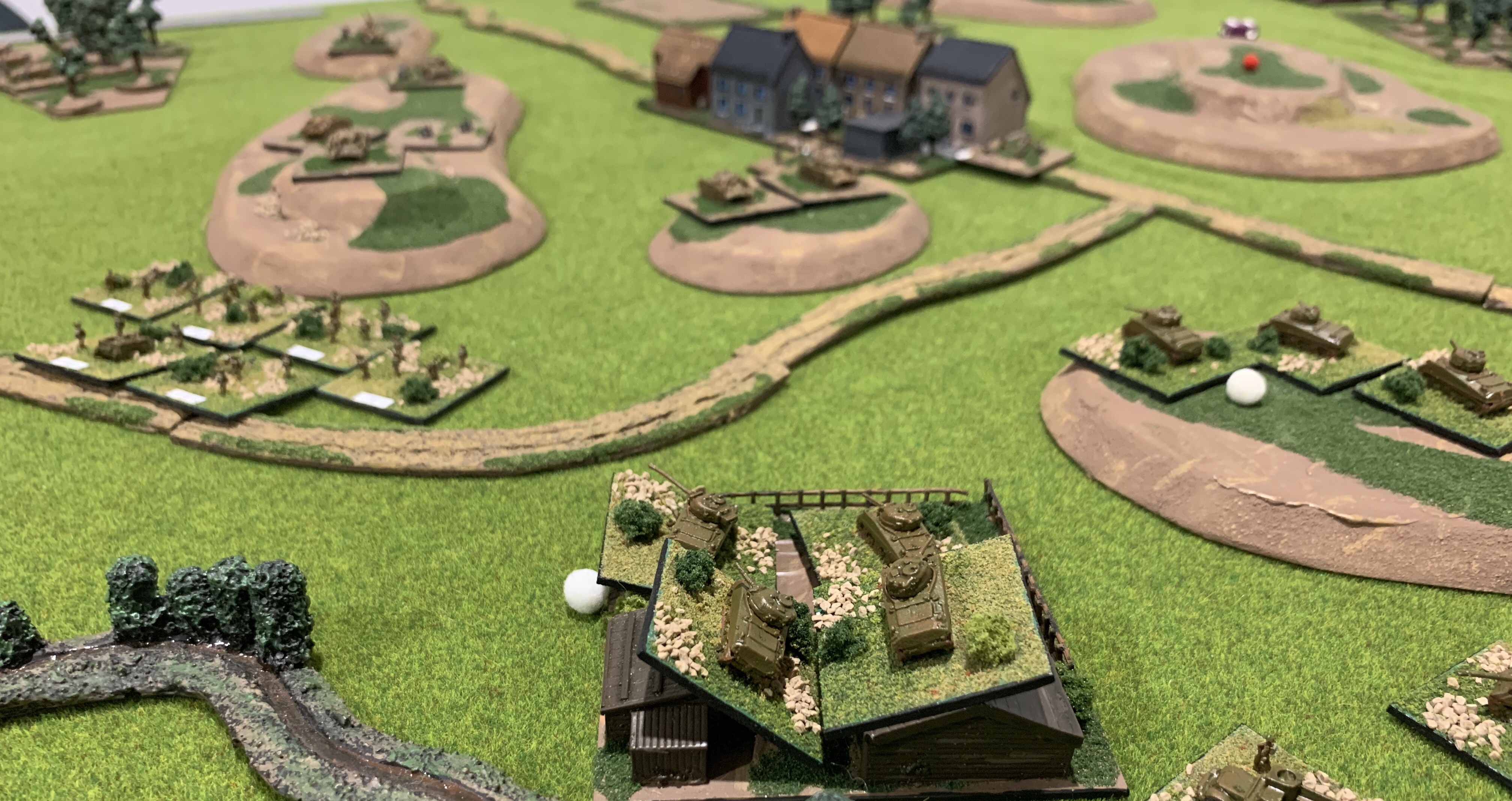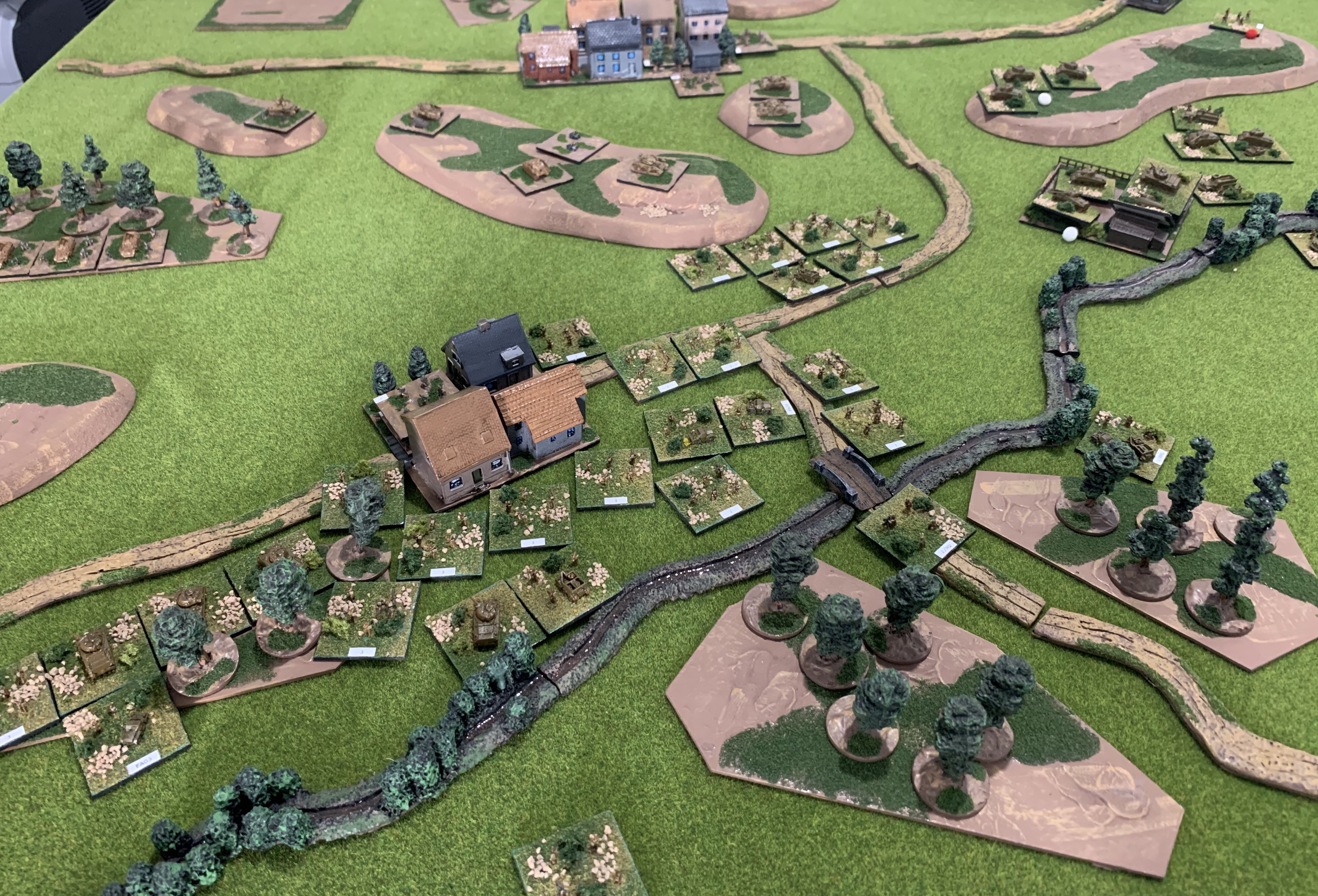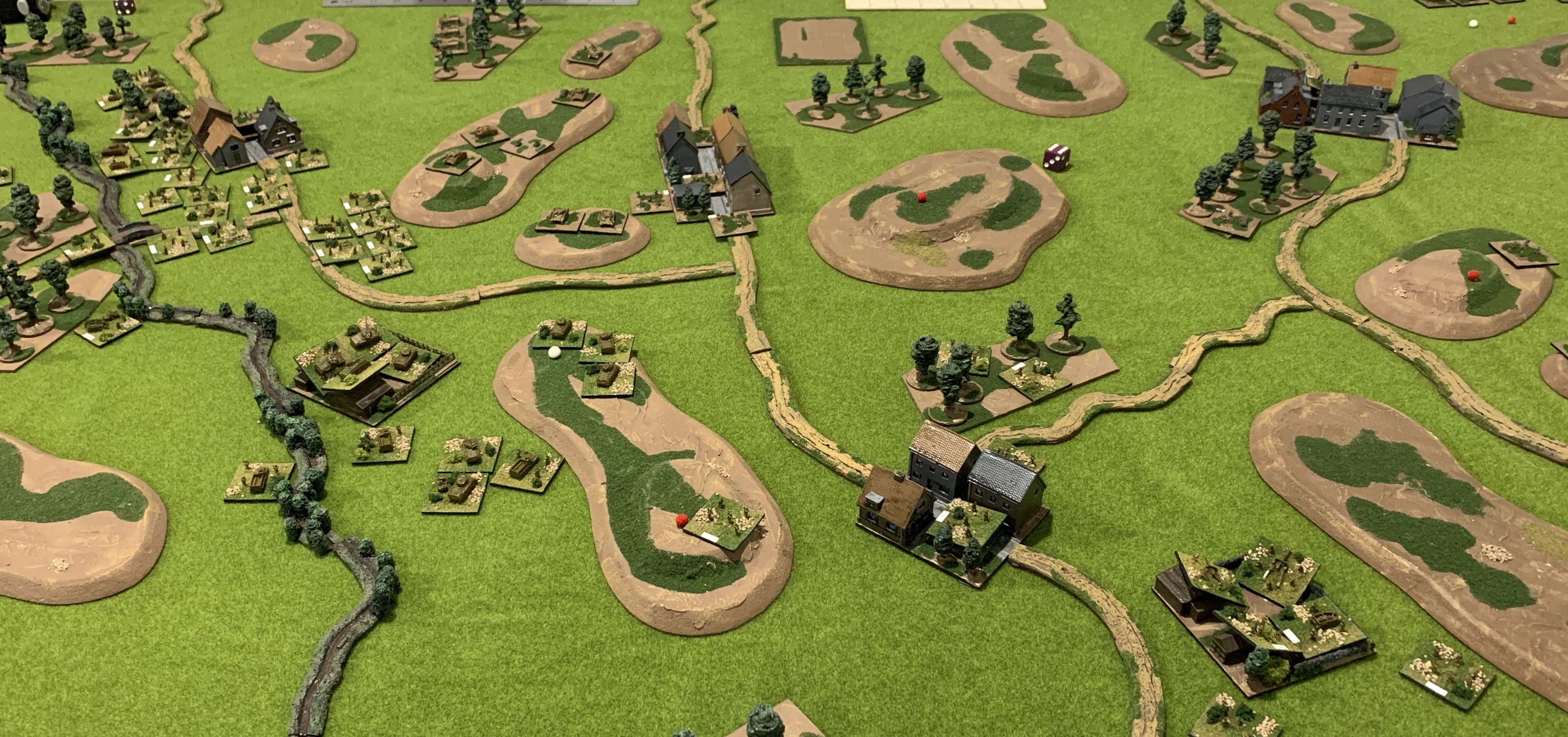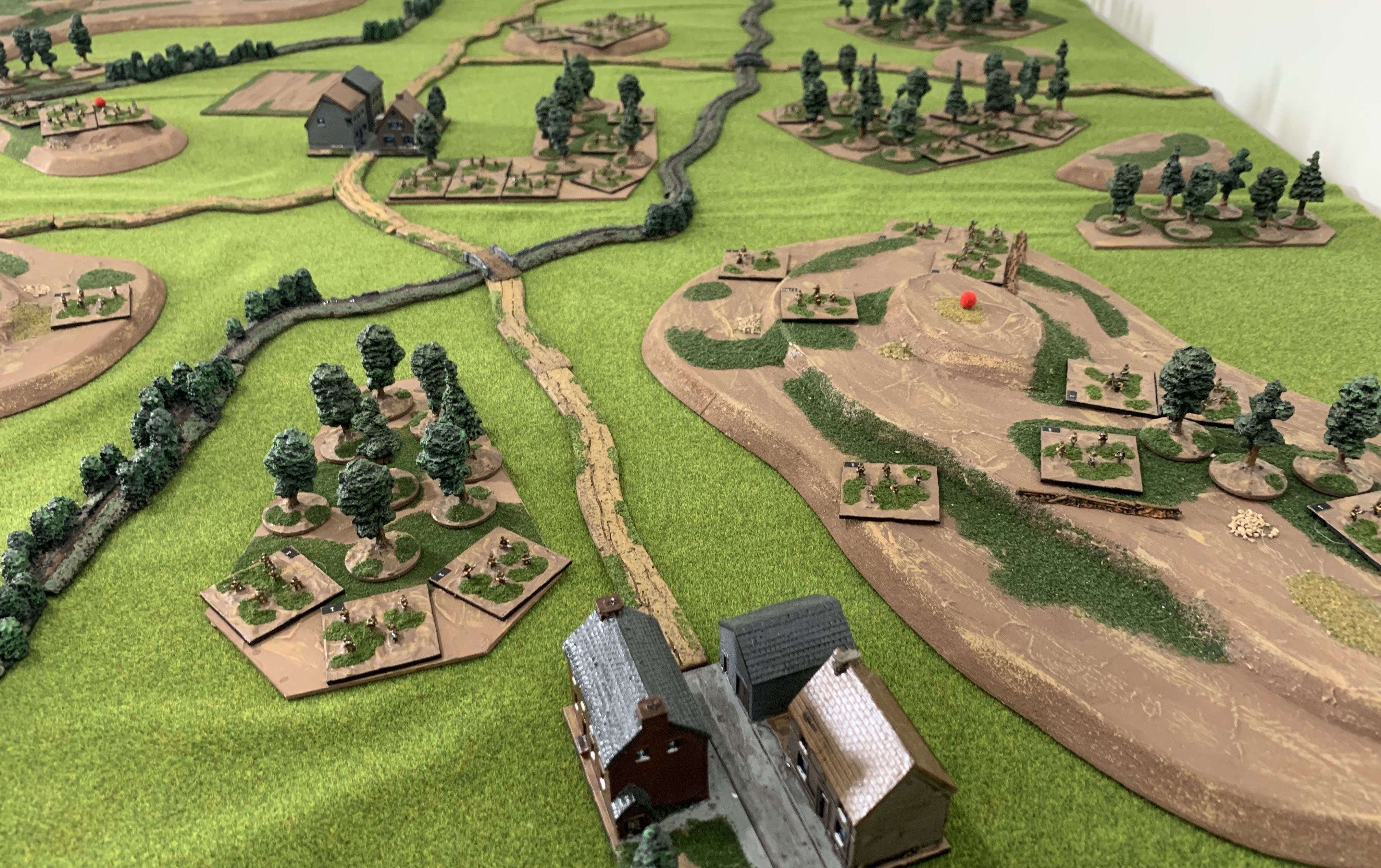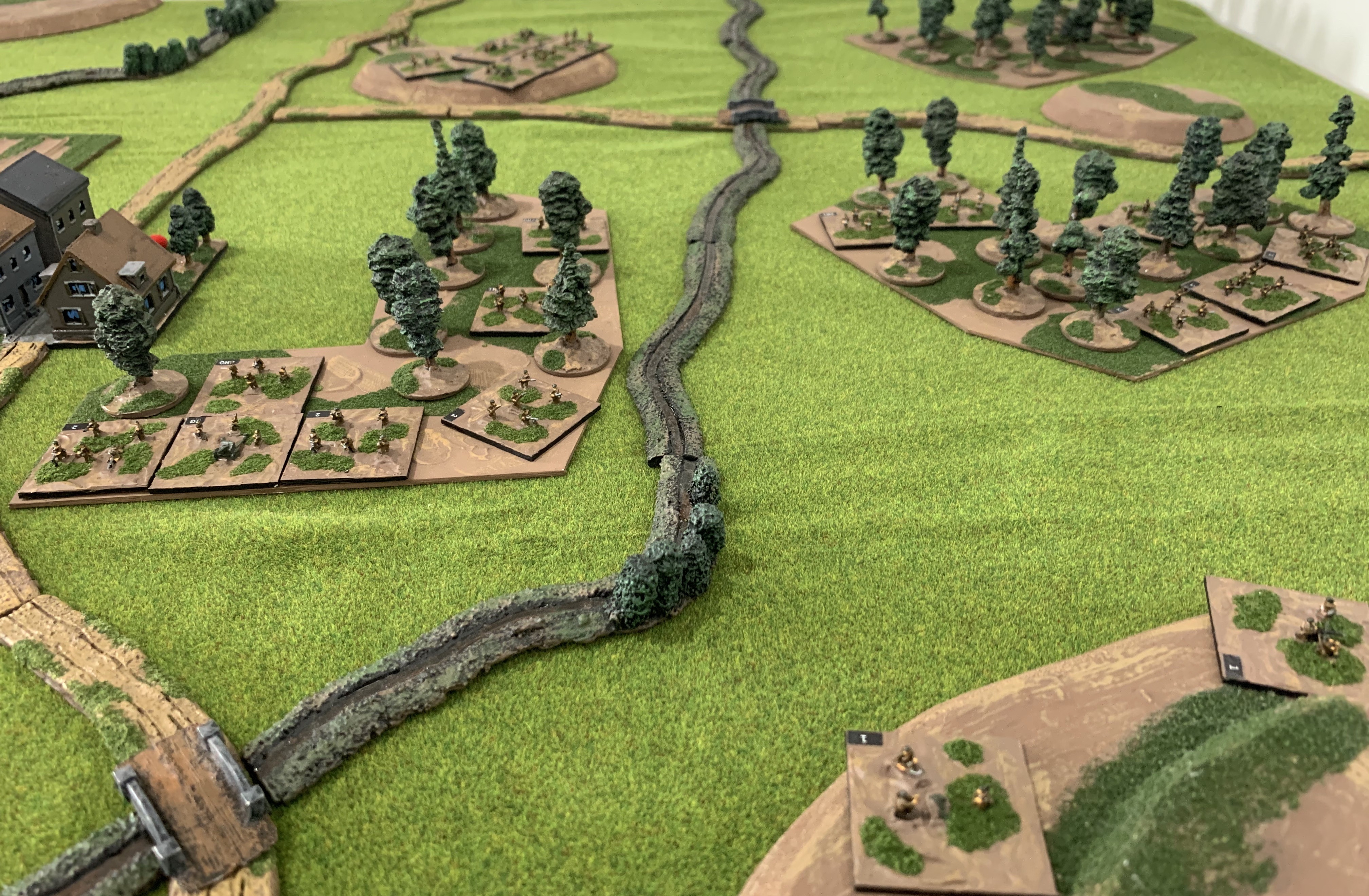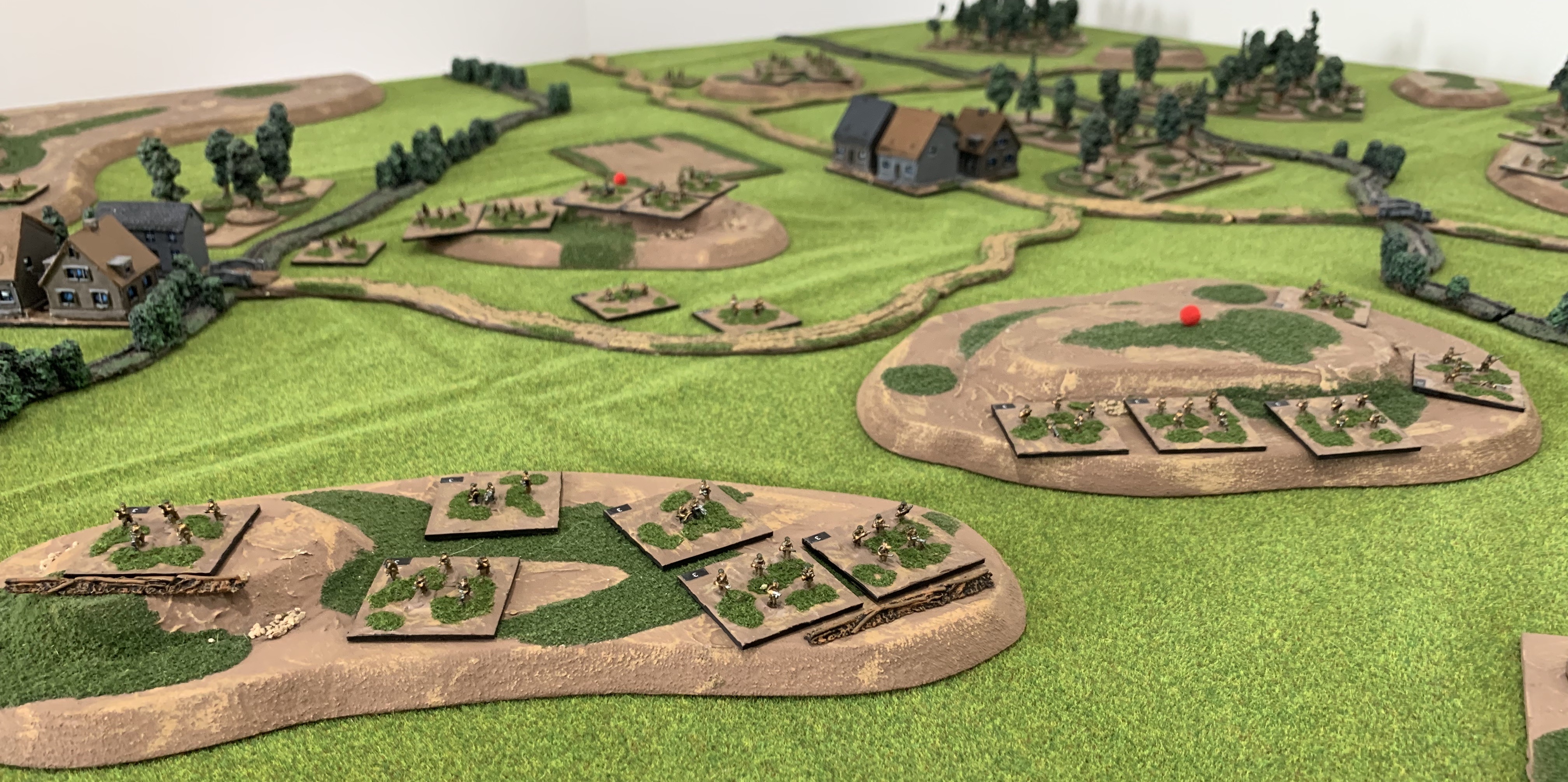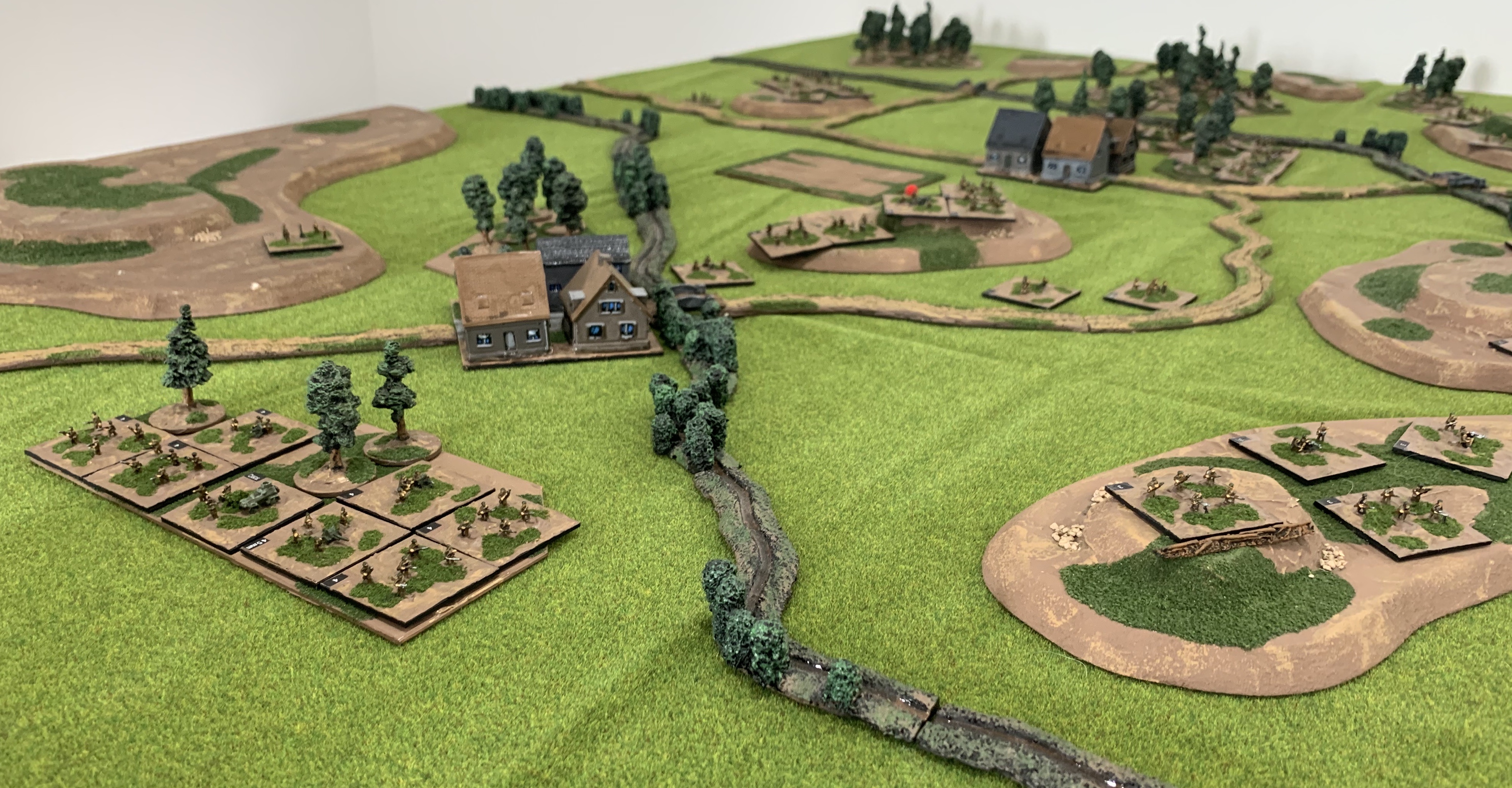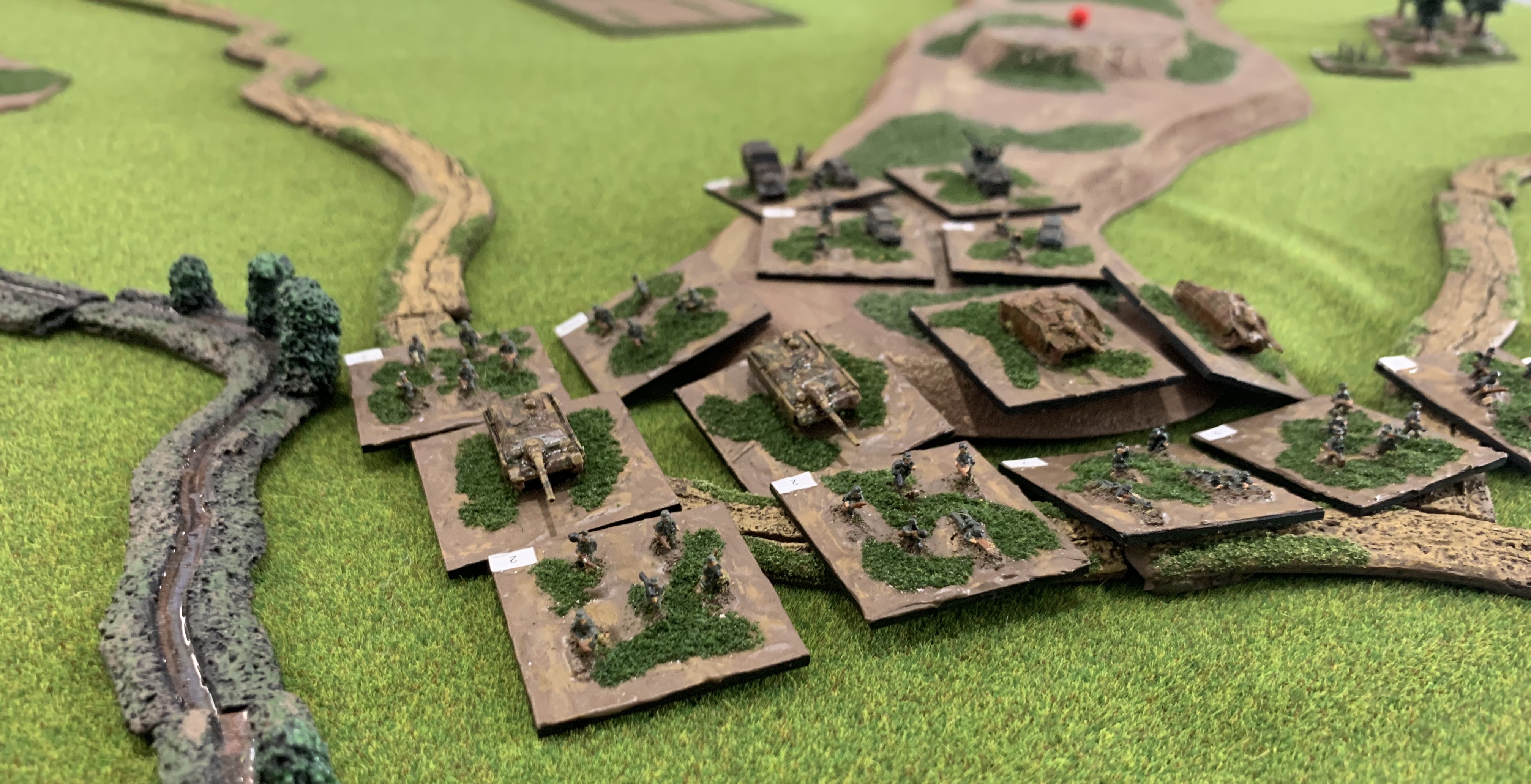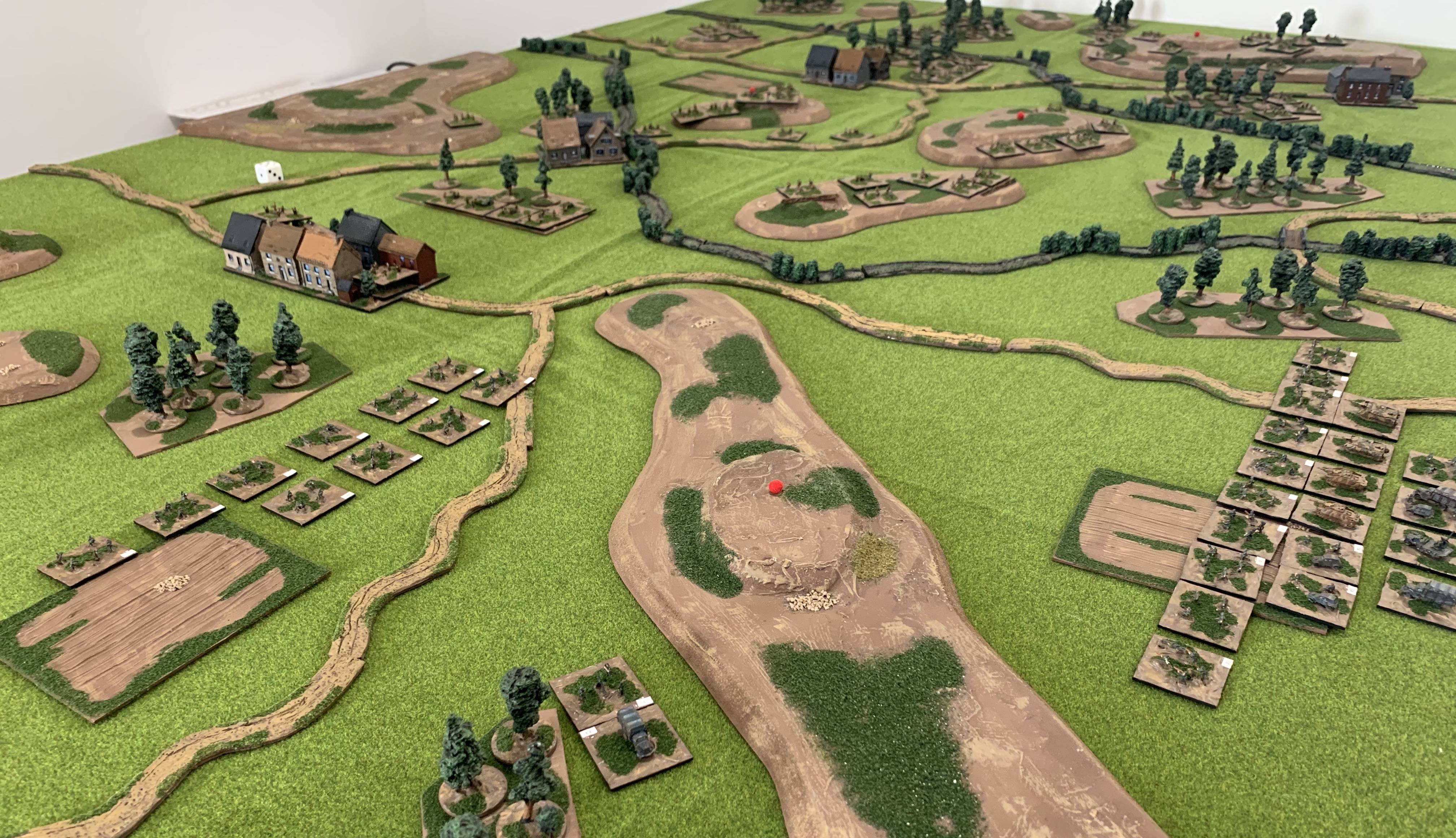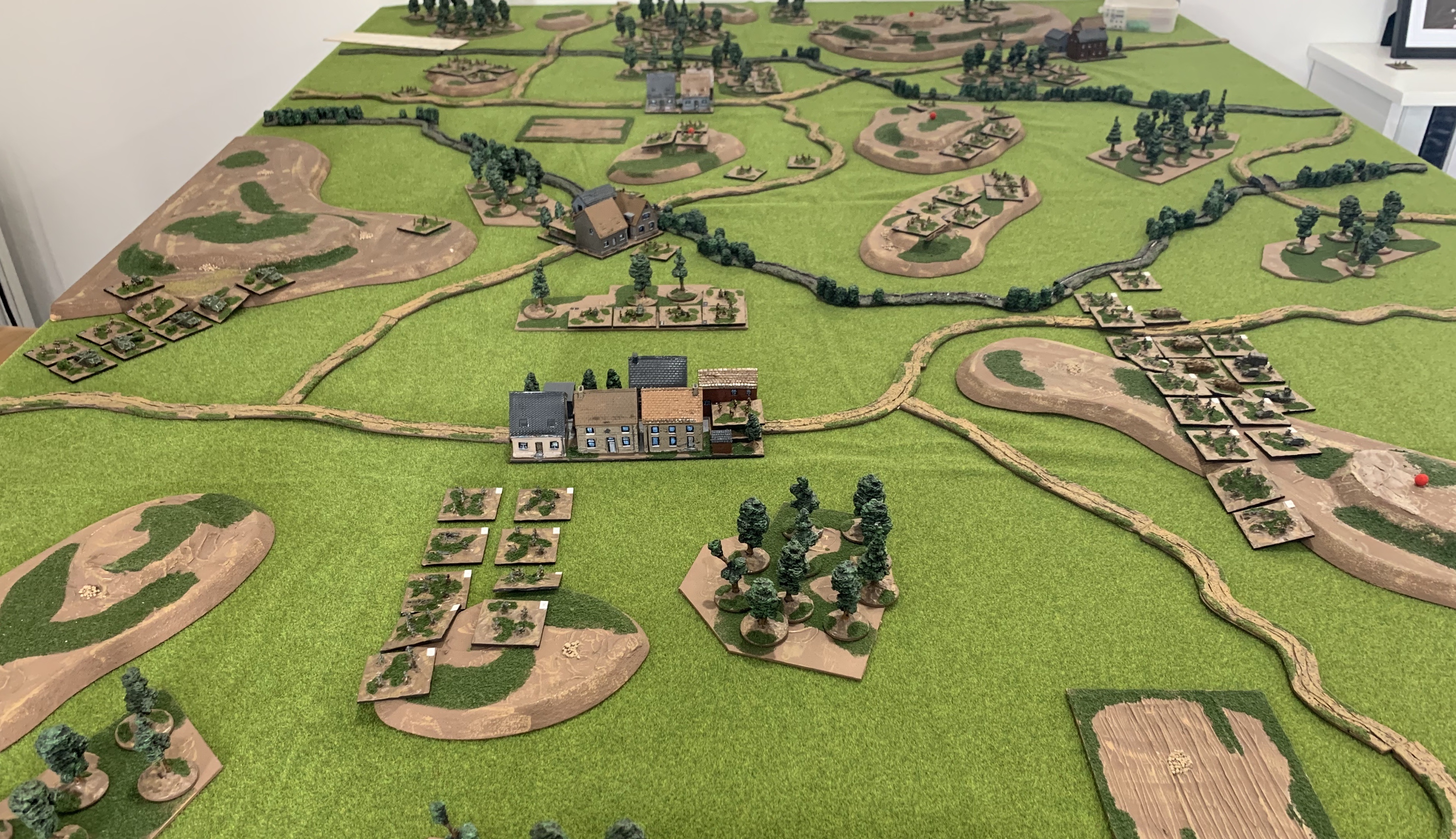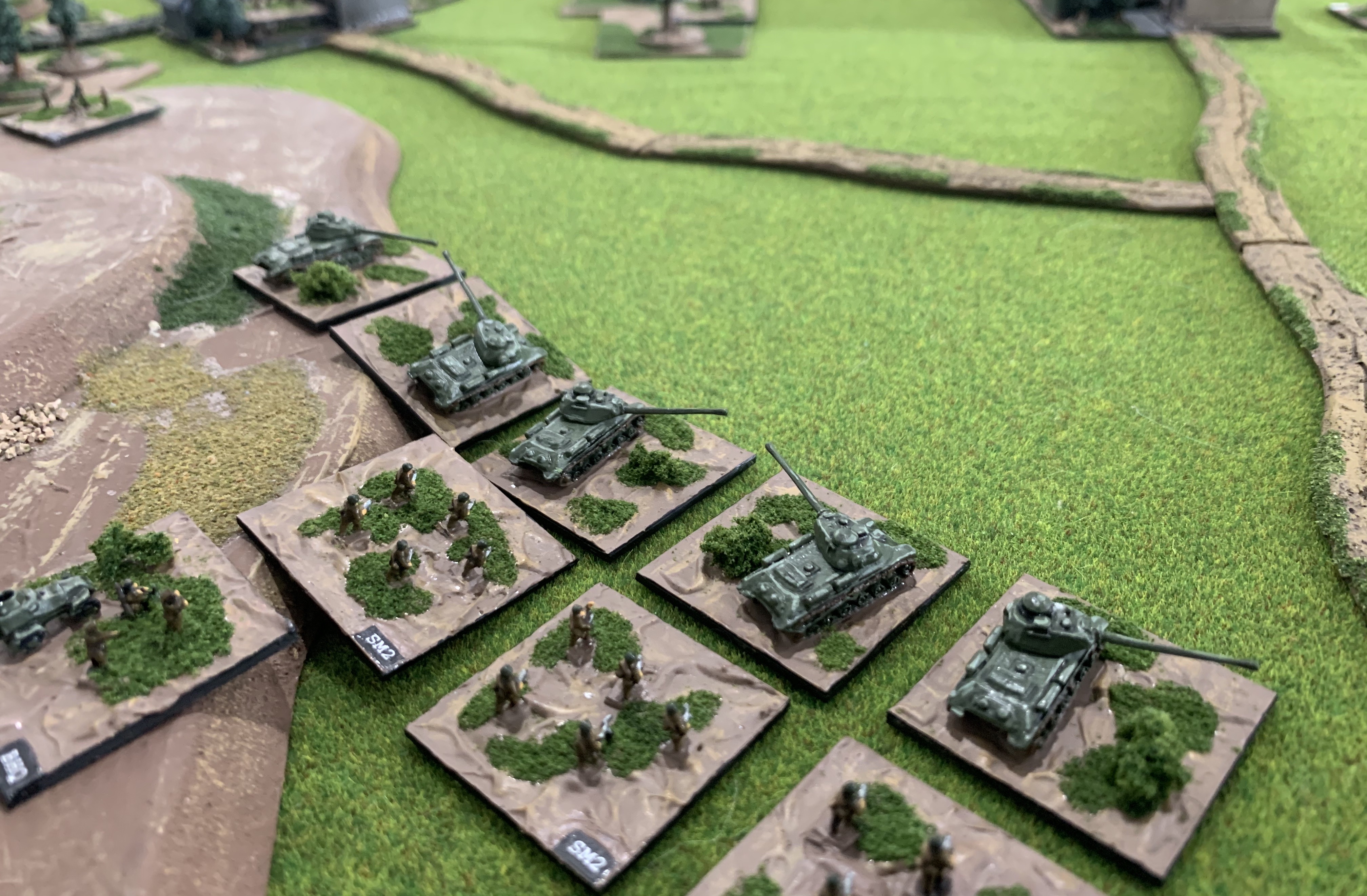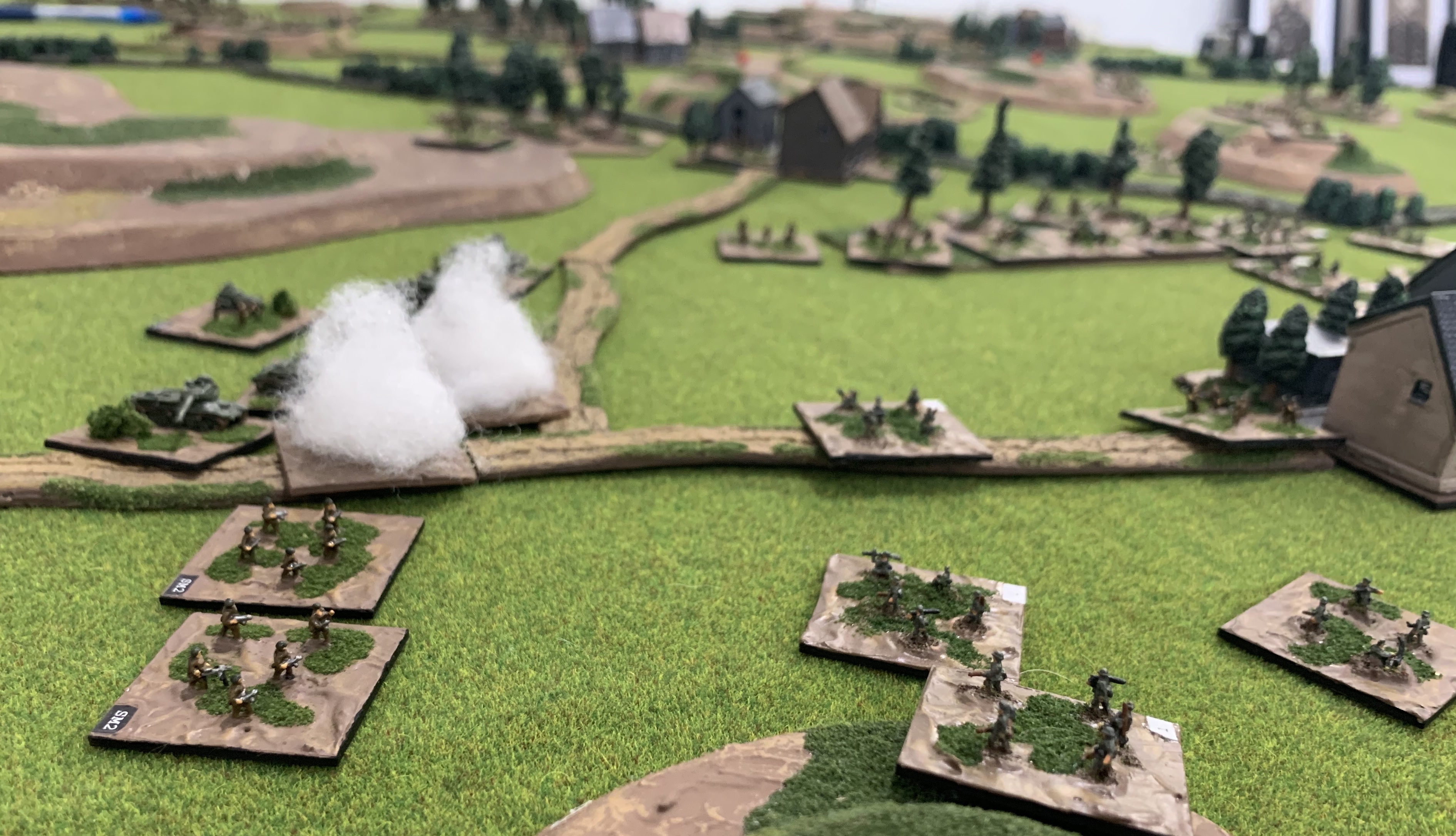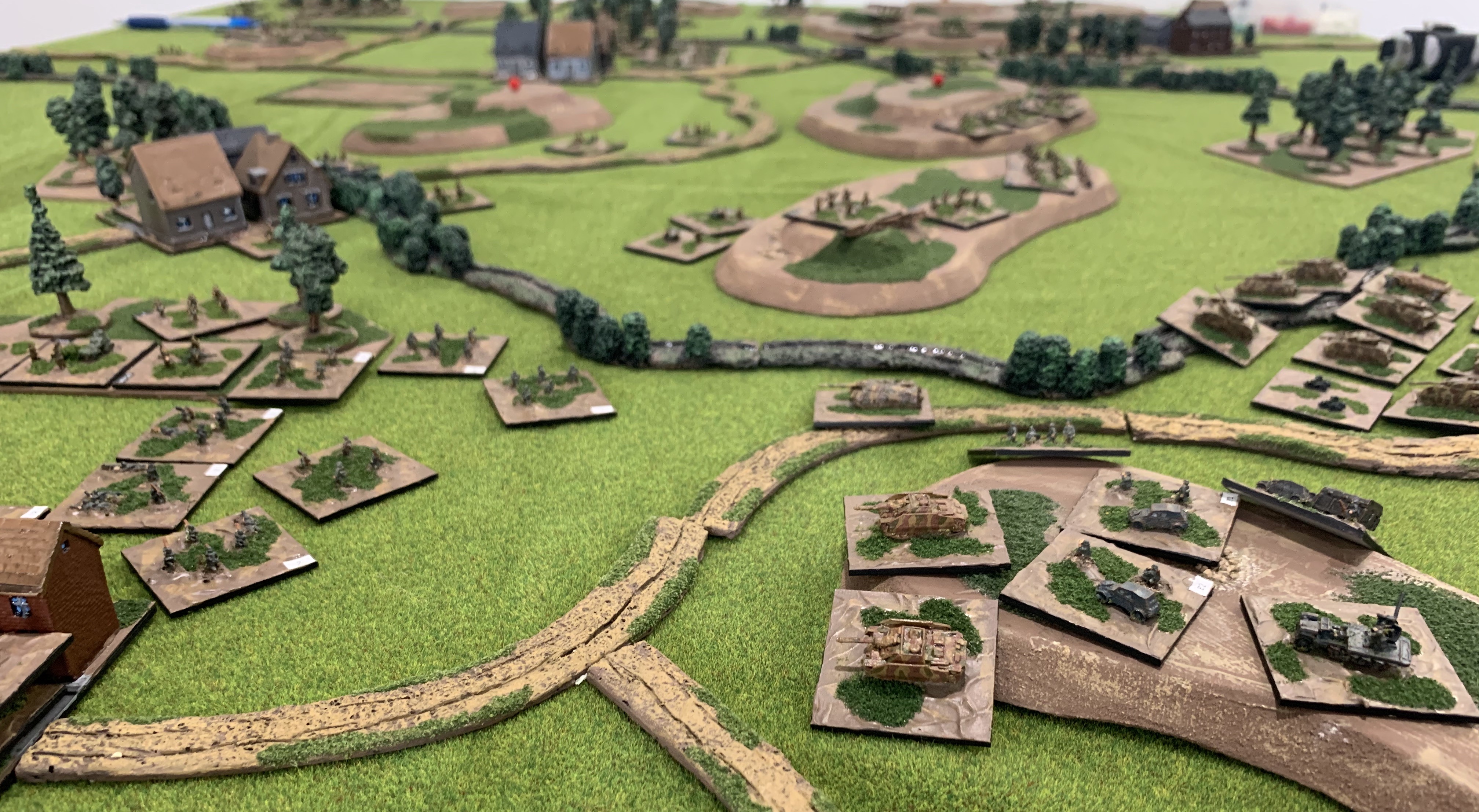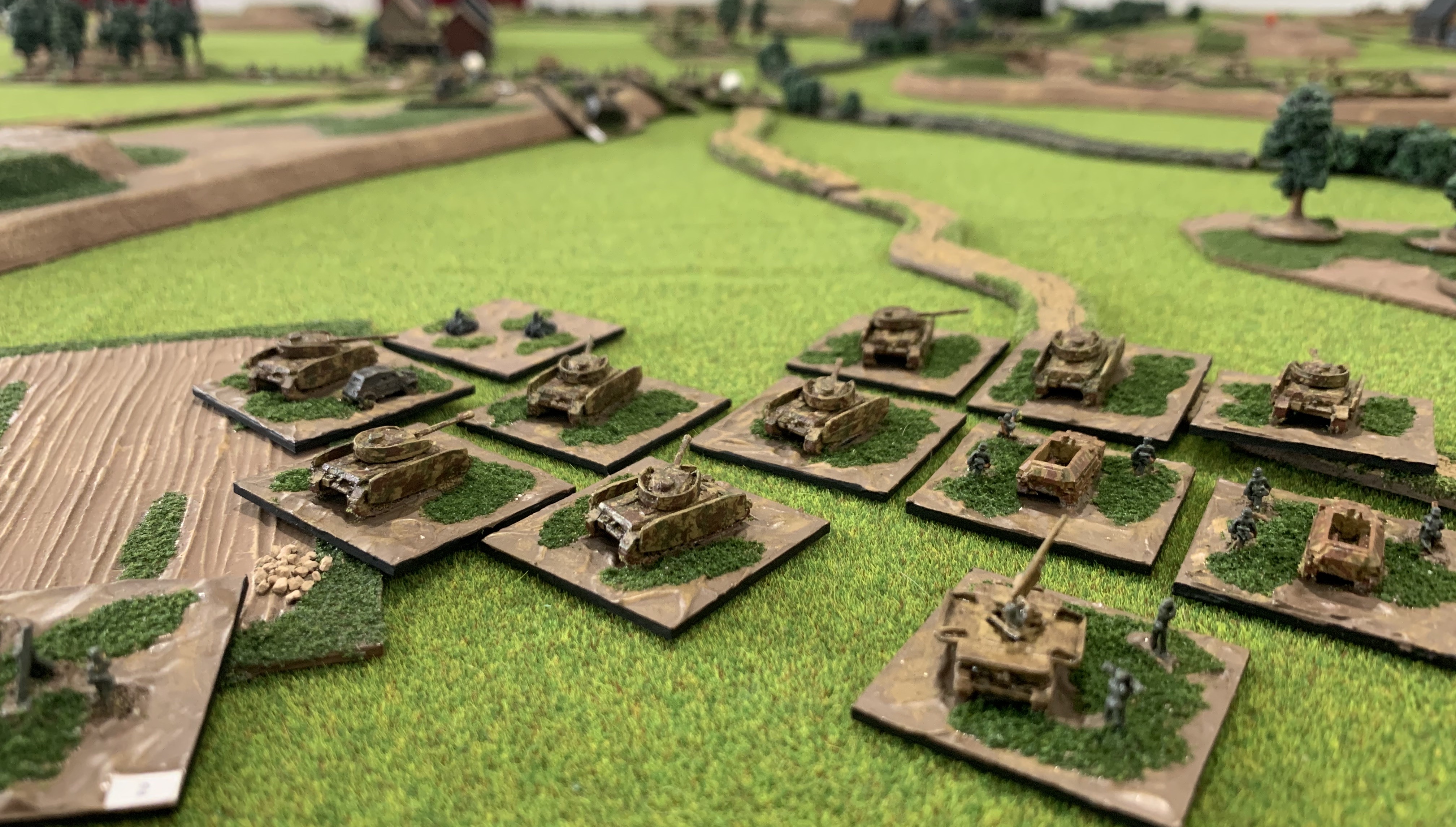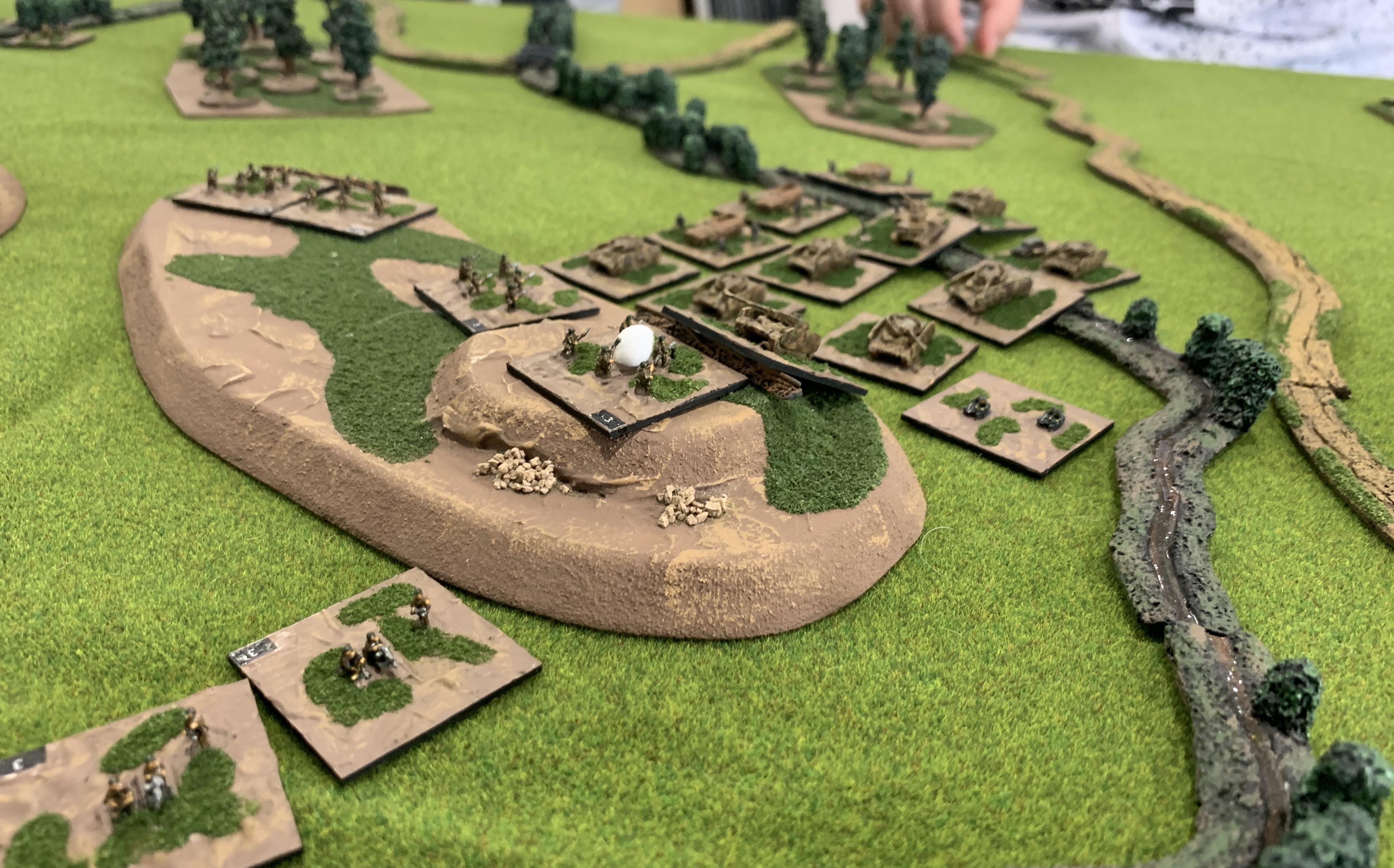Friday evening provided an opportunity for another Spearhead game, the second in as many weeks set in 1940. As is normal the scenario was developed using the Scenario Generation System. This time the situation was a mutual encounter with both players using their defend lists. The German List was based around a Panzer Division while the French a Light Mechanised Division.
Generalmajor Horst Stumpff frustratingly issued his orders to the commander of Schützen Brigade 3 and watched Oberst Ludwig Schöne head to his waiting command car. The French had assembled had launched a local counterattack and with his armour refuelling it was his infantry which would need to halt the attack and seize the initiative. Horst’s mind pondered what could happen if Ludwig failed. Damn the French for having gained the initiative…
Schöne lost no time and soon had confirming his own plan and issued his orders. He had decided to act quickly and boldly. This he was sure would allow him to seize the initiative from the French. His main effort would be in his centre where several areas of high ground would dominate the battlefield and slow enemy movement. Two Schützen battalions were allocated this task. These were supported by four guns of the division’s heavy Flak company and had on call one 105mm artillery battalion.
On the German left a long ridge line dominated the flank. The third Schützen battalion would seize a portion of this ridge in an effort to delay a likely French flanking move, which he expected would be by armour. This battalion would fallback if pressed, contesting the ridge from nearby villages and woods.
Below, the area of operations photographed by a German Storch from the west. The Germans are on the left and advancing south (right).
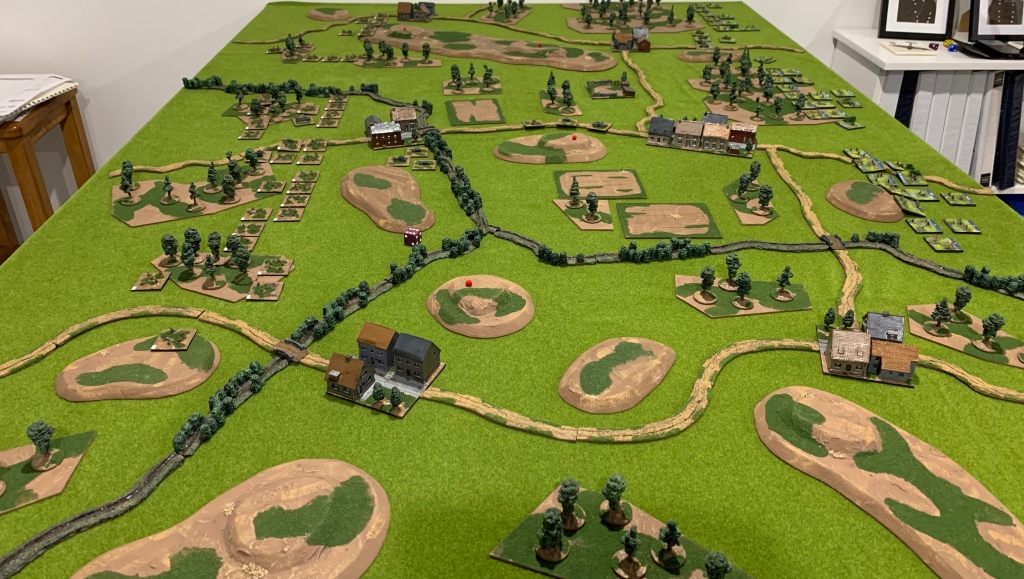
However, it was in the centre his plan was most daring. With his request for reinforcement confirmed he would insert the 3rd Panzer Division’s Reconnaissance Battalion as a wedge into the French centre. The battalion would press directly down the road to the town of Aunoit and seize it. This would divide the enemy in two. Schöne hoped that this would gain valuable time while his two Schutzen battalions moved forward. Then once reinforced elements of the Reconnaissance Battalion would harass the enemy from the flank and rear when feasible.
It was late in the afternoon on the warm May day that the infantry crossed their start lines. Morale was high, despite the realisation that the infantry would soon be engaged with enemy infantry and armour. In the centre elements of the Aufklärungungs-Abteilung pressed forward at speed. In front were the fast moving motorcycle platoons followed by a number of light Sdkfz 221 armoured cars. Near the front the battalion commander and his staff knew the race was on. Further elements of the battalion moved either off road or were strung out on the road. Soon elements of the battalion entered the town of Aunoit. Shortly after they reported the town had been secured.
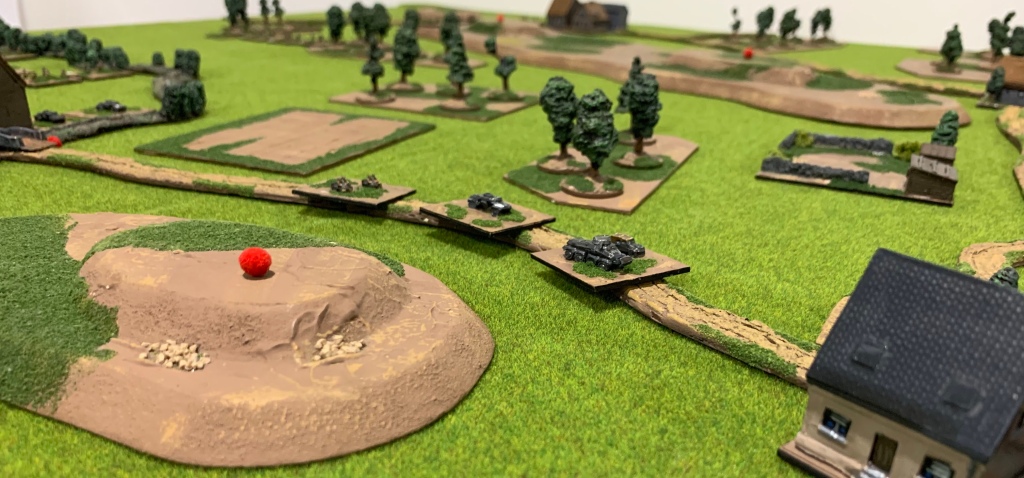
Above and below portions of the German Reconnaissance Battalion advancing. Two motorcycle mounted infantry platoons are already in the town. Currently on the road are the Battalion HQ, an Sdkfz platoon and a further motorcycle mounted infantry platoon. All these stands moving 18” per turn along the road. Winning the initiative in the second turn they moved first into the town of Aunoit.
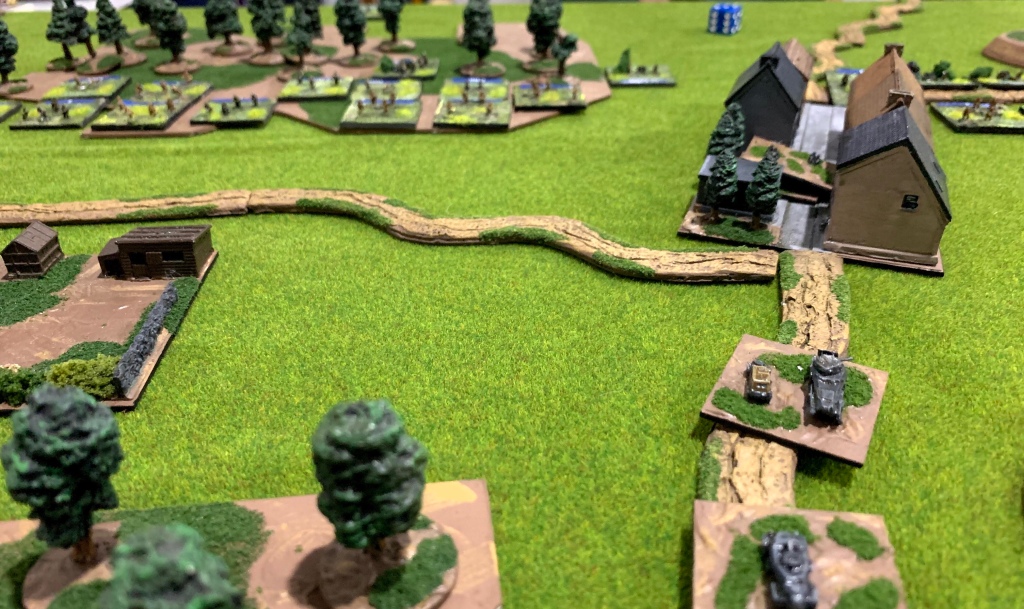
It would seem that four French infantry battalions were advancing on a broad front, two each side of Aunoit. To the east a large wood provided cover for one battalion, while further east another battalion supported by a battalion of Somua tanks pressed forward. This force, heavily supported by French artillery would soon be engaged against the German left. Below, French Somua advance.
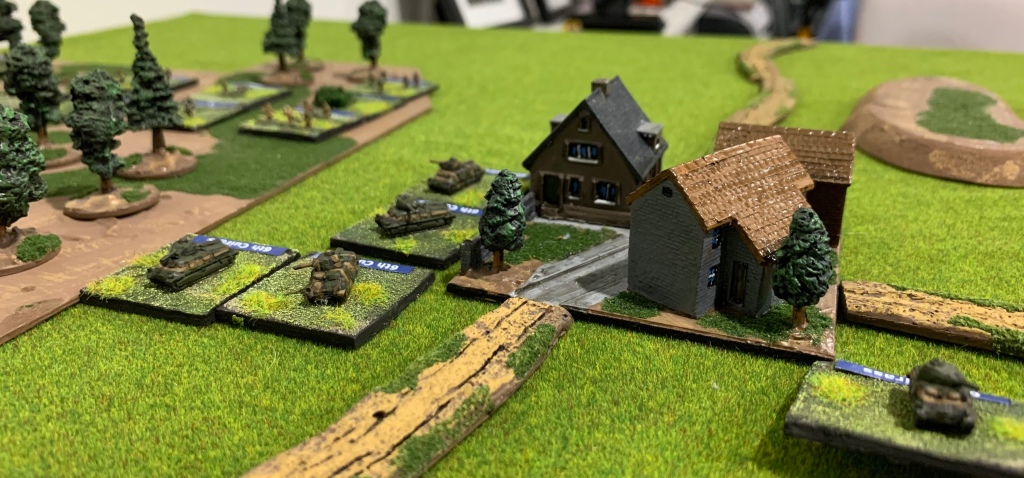
However, it was at Aunoit the fighting would first erupt. To the west of Aunoit two further French infantry battalions were also advancing north. As the major elements of one battalion passed the town French anti tank guns hurriedly deployed while a French infantry company prepared to conduct a hasty attack on the southern portion of Aunoit.
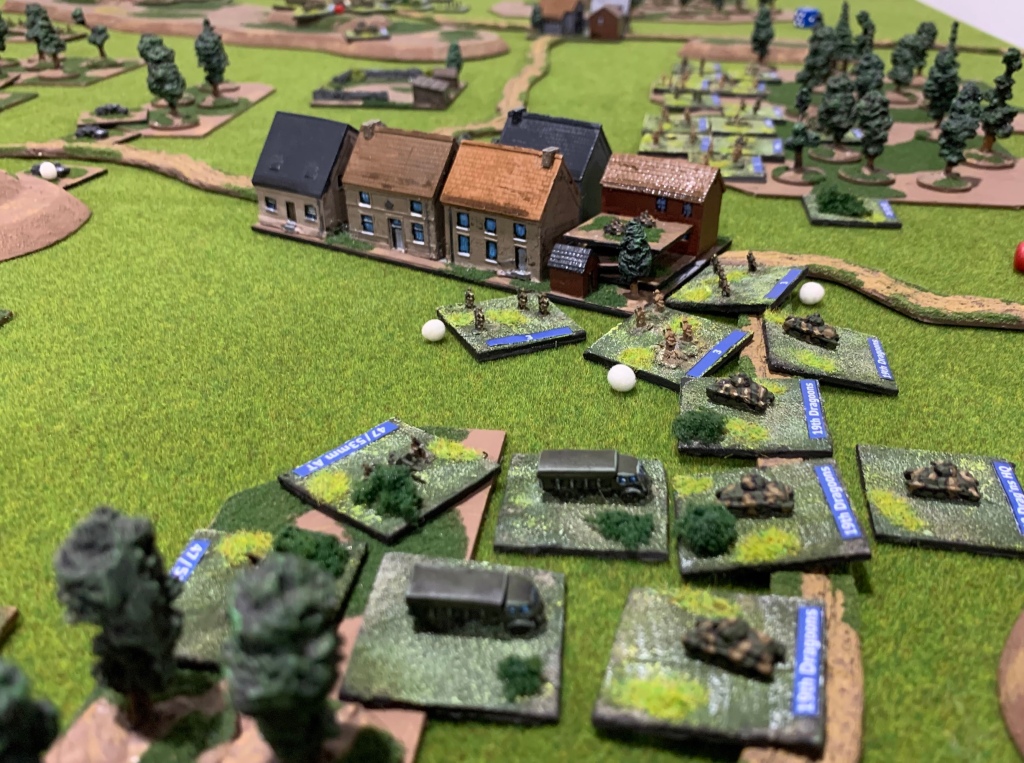
Simultaneously another French tank battalion, this time comprising H39s, moved forward to support the infantry. Fortunately for the Germans the attack on Aunoit was broken up by the German defenders and in less than 30 minutes the French company attack was driven back.
On the German left the 3rd Schutzen battalion was engaged by French infantry. Poorly deployed the German infantry were soon being pushed back by a combination of small arms fire, machine guns and artillery fires.
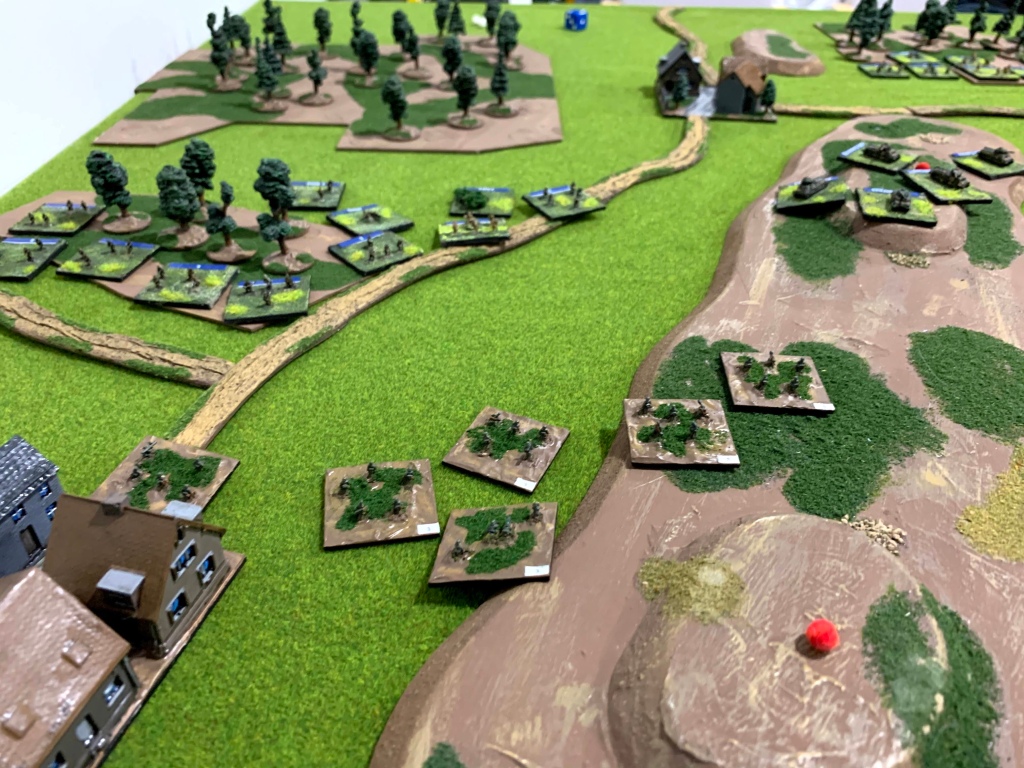
Above, the German left comes under determined French attack.
The situation here could have been worse if the French Somua tanks, below, had pressed forward. Instead they seemed content to engage the German infantry at long range, at least when not dodging fire from a well positioned 88mm Flak platoon.
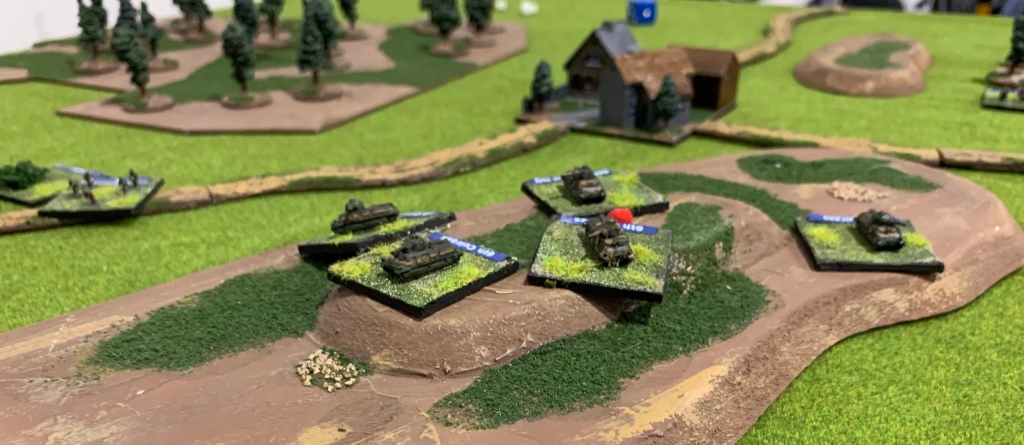
Meanwhile the German centre and right was being pressed by two French infantry battalions. The combination of two infantry battalions supported by a battalion of H39 tanks looked daunting.
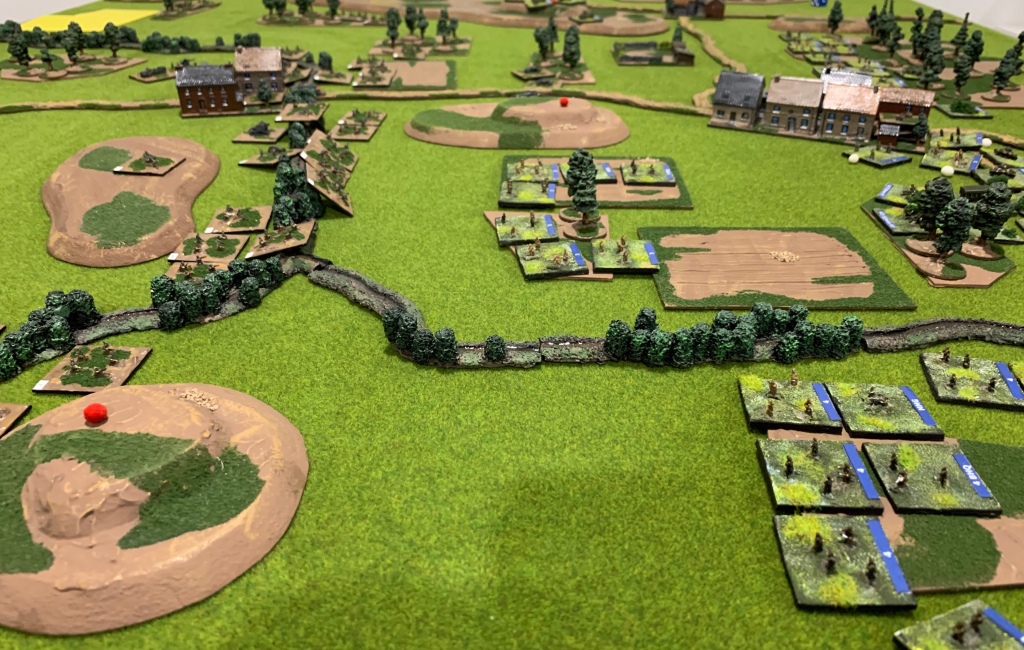
Above and below the French engage the German right and centre.
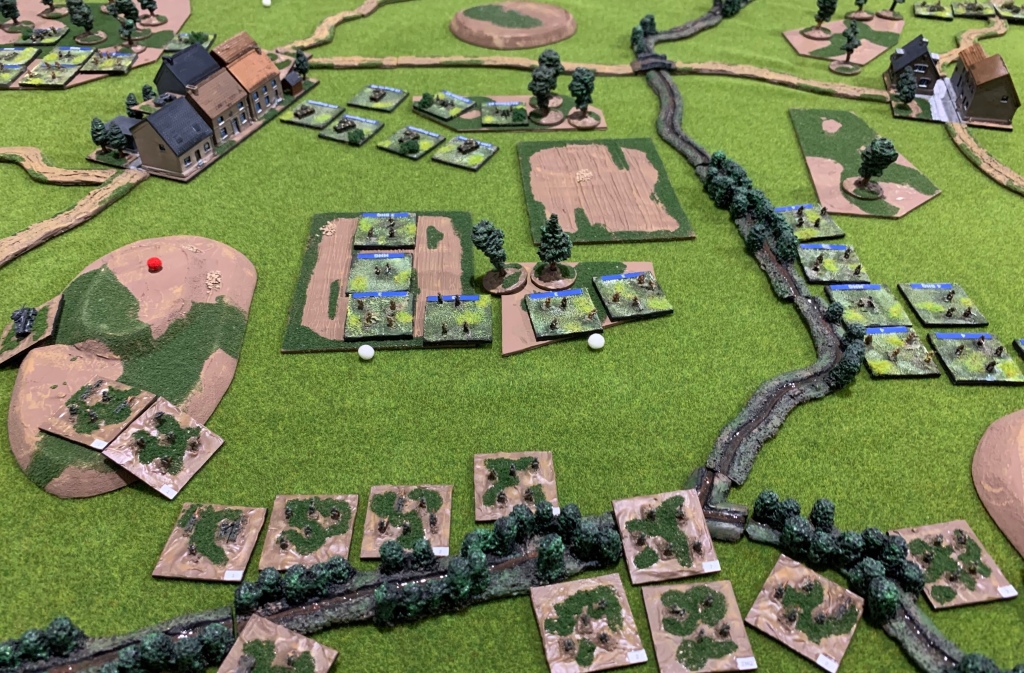
However, with one battalion shaken from the attack on Aunoit and the armour seemingly unwilling to advance it was the Germans who pressed the French. Soon under heavy pressure one French battalion broke in rout leaving a hole in the French centre.
Now as darkness began to envelop the field the reconnaissance elements began to advance again. First infantry and then armour began to move out of Aunoit. The French attack had stalled, tomorrow the German advance could begin again.

Unfortunately at this point we had to call time. It was a fascinating game with plenty of challenges for both commanders. All the miniatures are from Heroics & Ros. The Germans from my collection while the French are from Robin’s. An account, recorded from the French perspective, can be found here.
As way of an addendum here are the orders of battle for the two formations involved. They are used with the Scenario Generation System which we frequently use to create scenarios. Most of our scenarios use unbalanced forces and often involve attack defence scenarios. This one is an encounter. Despite this the composition of the forces very different. It is worth noting that we allow players to select options and depending on the option chosen, assuming they do, the victory point requirements may be impacted. Here are the German forces I used and the French forces my opponent used. If you wish to create a scenario using these orders of battle the table layout should be able to recreated based on photos of the battlefield.
